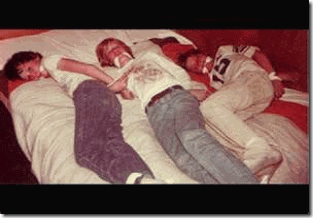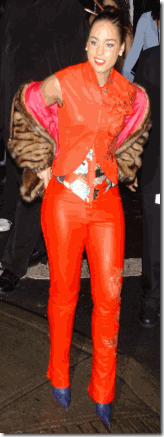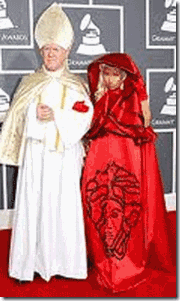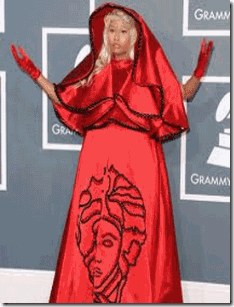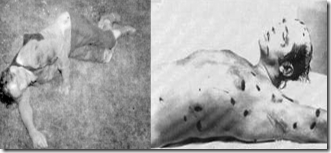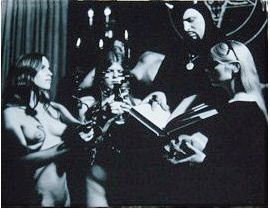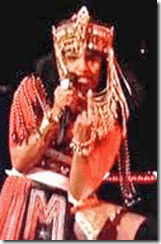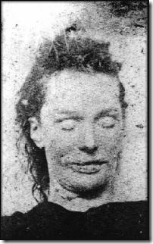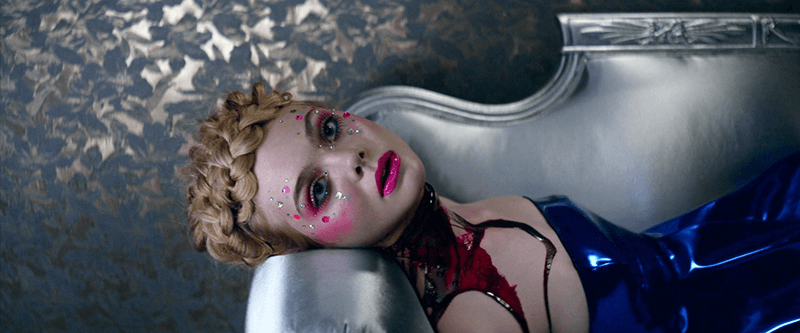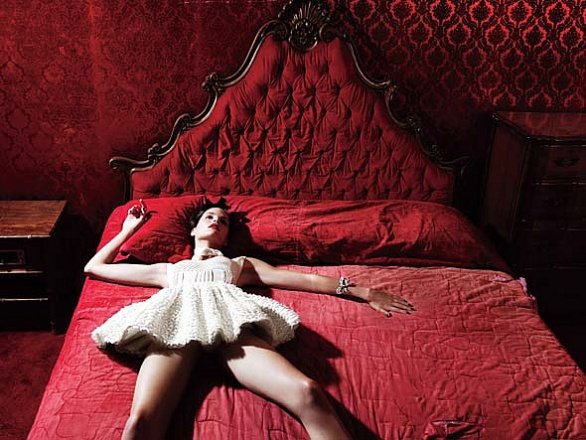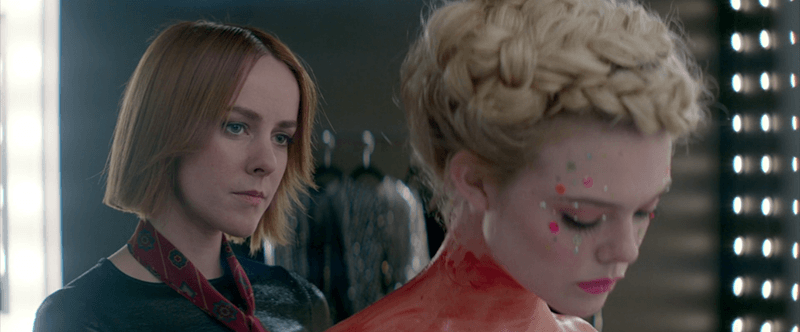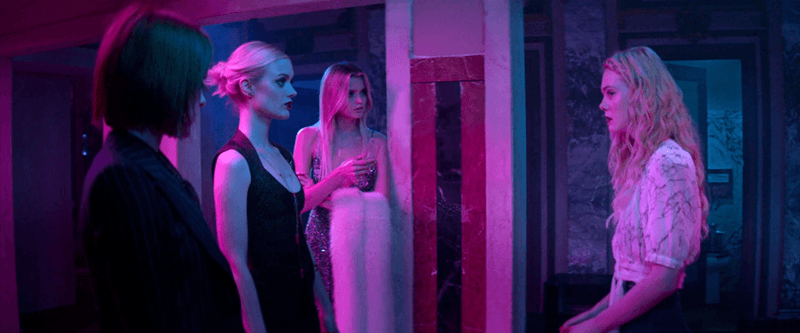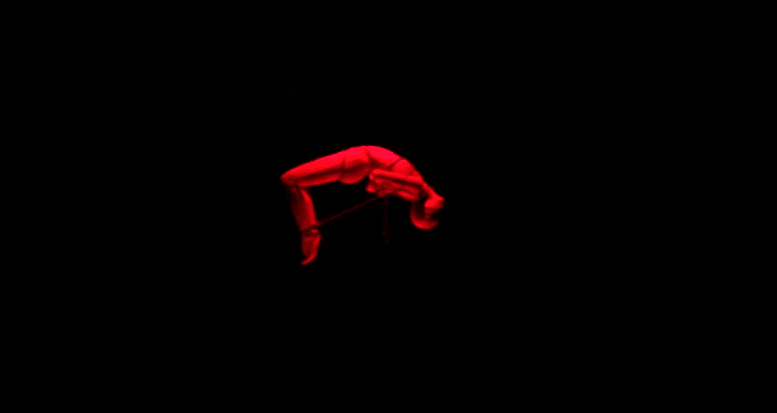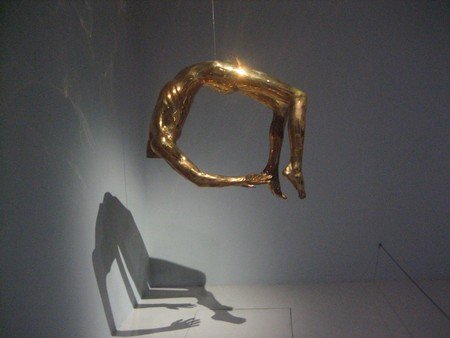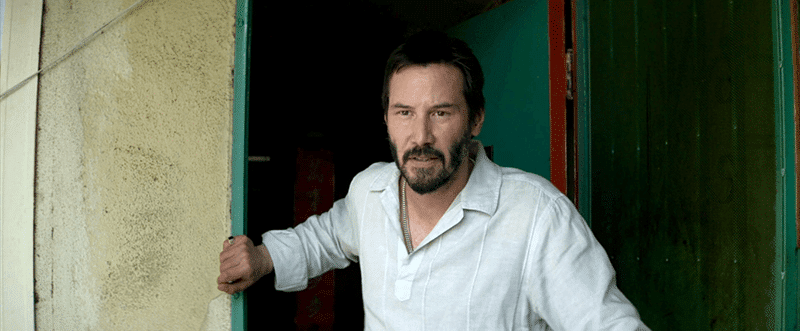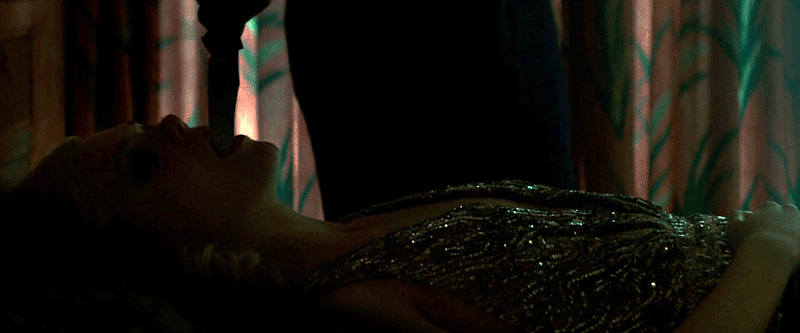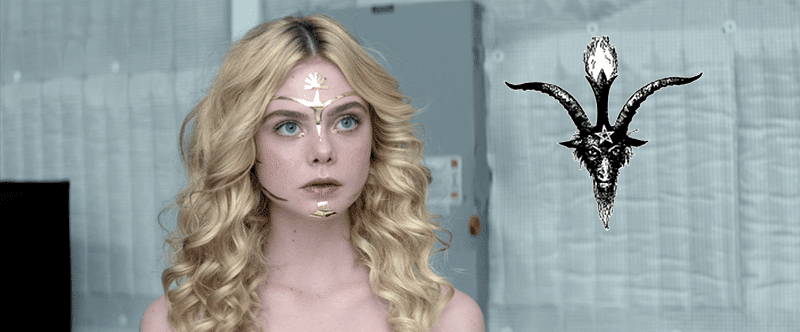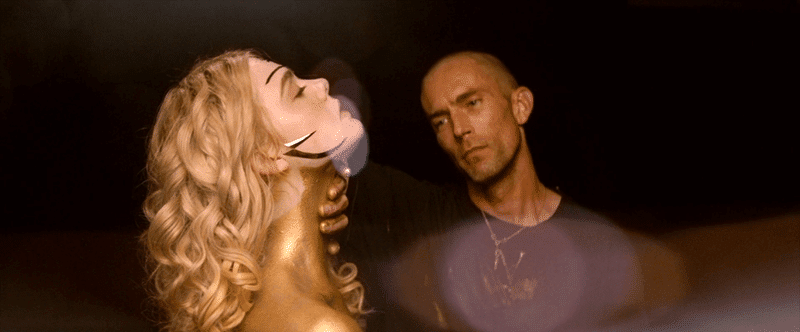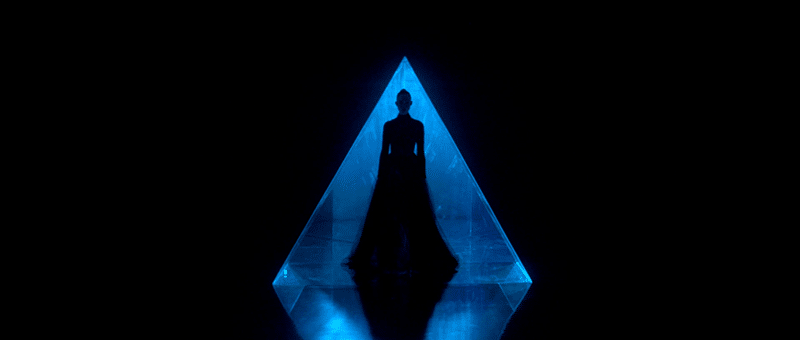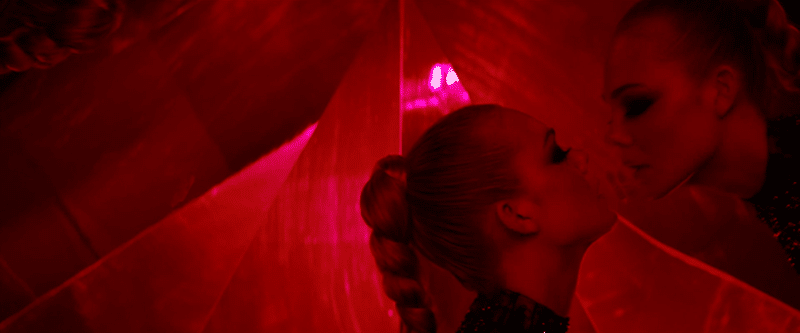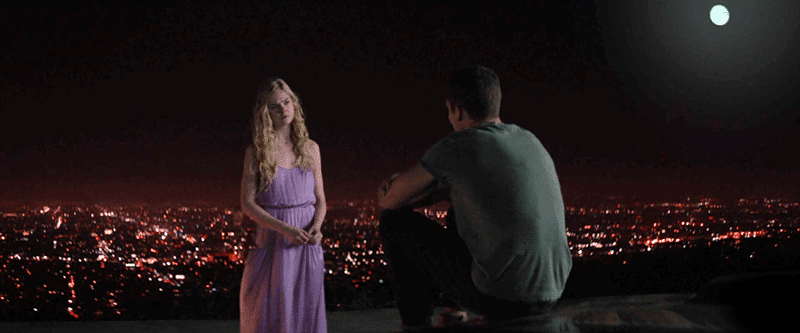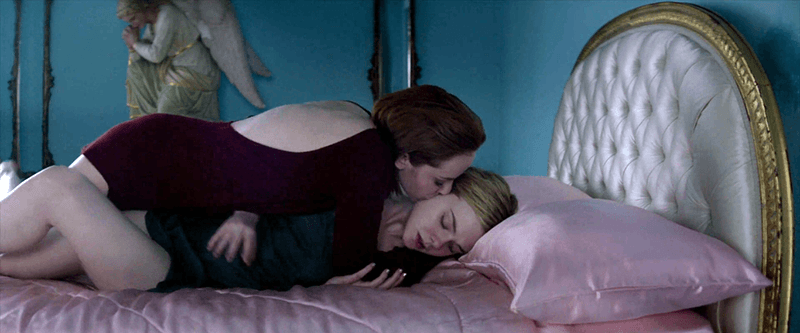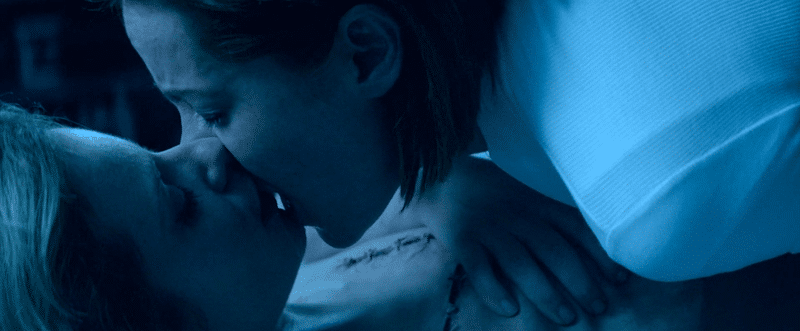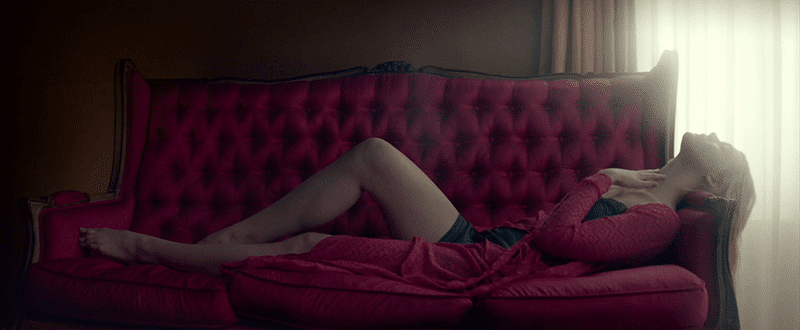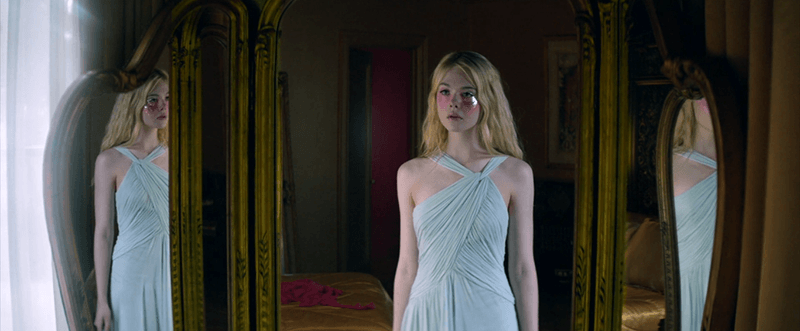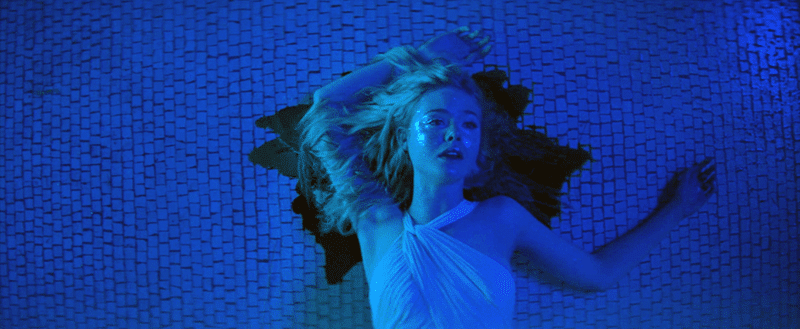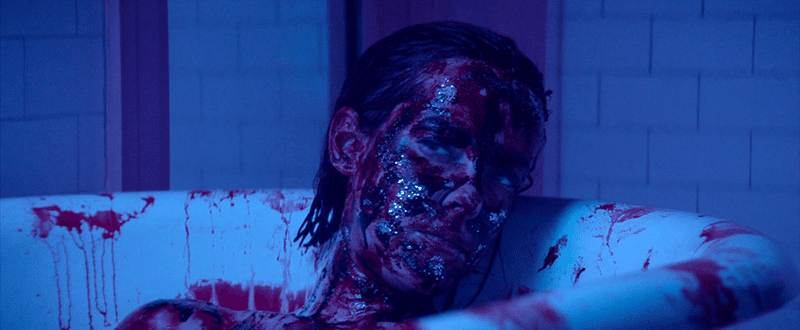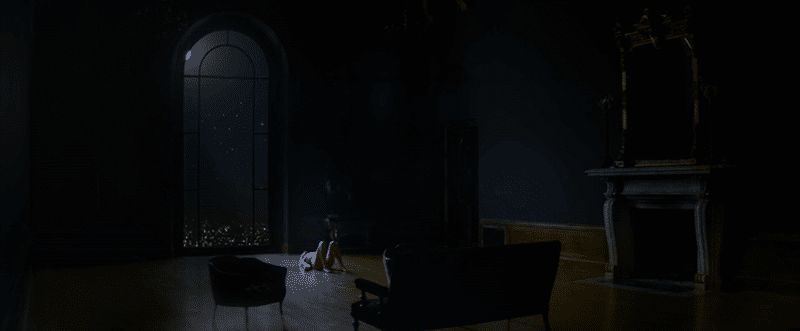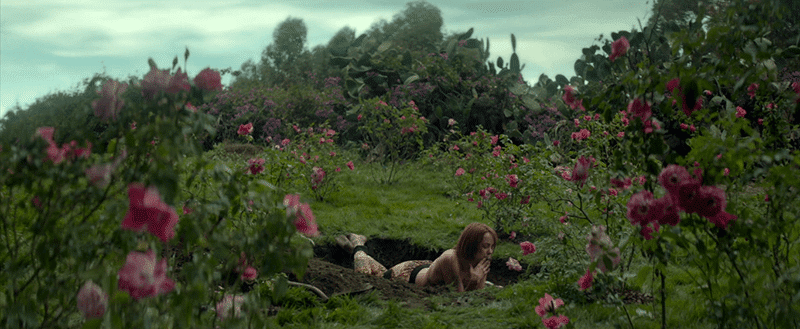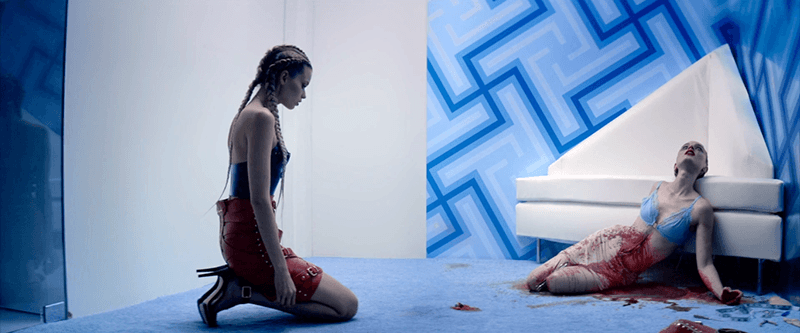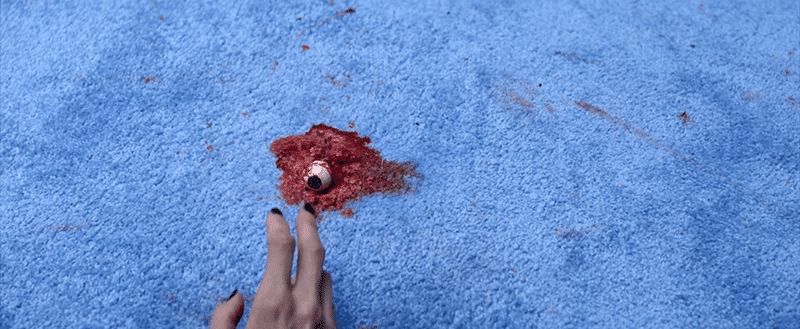
TAGS: Hollywood, Movie Stars, Hip Hop, Rap, Rock and Roll, Manson, Helter Skelter, Beatles, Beyonce, Ray J, Whitney, Brandi, Gucci, Runway Models, Twerking, The Devil, Blood Sacrifice, Contract, Signs, Symbols Sigils, Satanic Elite, Magic, Image, Wealth, Fame, Industry Slave
The signs these folks flash over and over again, are there to demonstrate to those who rule that they are submitted to the authority of the elite. It is not a club you want to join. Believe me. These folks tragically pay a very heavy price to live the lives of luxury. What is the worst part of the tragedy is that they never really had an opportunity to review the options and make an informed decision about whether or not they want to join. They were people just like all of you who desire to reach for the stars. They just really believed that becoming “famous” would lead to the life they always dreamed about. They started out innocently enough, got a few hits under their belts. They may or may not have had to make a few compromises to get those opportunities, but once they had gotten that far into the matrix that is the WORLD OF THE RICH AND FAMOUS, they OWED allegiance to those who got them there. Suddenly, they are being coerced into doing things they would have never thought they would do. Disgusting, nasty, evil things. Then, at some point, they are told that if they want to continue in their lifestyle, they must sign a contract with the devil. They must sell their soul. Once they have signed on the line… their nightmare begins. They begin to be tortured and tormented, they find themselves inhabited by demonic spirits. They are no longer themselves.
That is the World of the Stars. Is that really what you want for yourself?
There are those who offer their children up to “the Business”, some from infants. God bless those poor little children. They are tortured, man handled, trafficked and possessed from a very young age. They never get to know what it is like to be normal.
I used to be an actress. I got out when I saw how sick the local acting community had become. I am glad I never had to witness or experience the deep darkness of Hollywood, New York or Paris. I saw enough. I also worked in the photography business for a short while. I would see young mothers bring their babies in for photo ops hoping that they will win the beauty contest, the modeling job, the acting contract. I tried to worn them. I told them that the “Business” is no place for helpless children. Why would you want to expose your child to all those sick perverted predators?
“EVERY BODY WANTS TO BE A STAR” they say it is everyone’s dream. I hope that no one reading this post will never have to learn the hard way, that that dream is actually a NIGHTMARE, that never ends.
Check out my Posts:
The Ancient Mystery Religion – The MAGI(CIANS)
spacer
Let’s take a look at some of our current stars flashing the signs that indicate their submission:
WHAT’S WRONG WITH THESE PEOPLE? This Is Way More Serious Than You Think
Sep 9, 2021
spacer
I have watched the saga of Britney Spears from the beginning. I feel so sorry for her and I hope that many people will begin to pray for her deliverance. People love to criticize her, they love her and hate her. Some even think she deserves what she is suffering. People, wake up. Don’t you see that these folks are a clear example of how the elite view you and me? TOTAL SLAVES. Not even human. Here for their amusement and to serve their purpose, nothing more. If they could, they would have you all in their clutches to dominate, humiliates, and discharge at their will. As a matter of fact, they are very near to achieving that very goal. Total Control/Total Domination.
These people are victims, and their are many more of them than you can imagine. Some are in the limelight, others are in the loneliest, darkest, most isolated places on earth. Held CAPTIVE, against their will, helpless and t the mercy of their overlords who are sick, perverted, predators driven by demonic entities. These people are forced to do the most unspeakable things and suffer the most unbearable pains. WE ALL NEED to be praying for them EVERYDAY! We may not know where they are… BUT GOD DOES!! JESUS/YESHUAH said he came to SET THAT CAPTIVES FREE. That has been the desire of my heart all my adult life. That is the WORD that I stand on. That is what I pray for DAILY. I want to see that PROMISE come to its full fruition. I desire to see THE CAPTIVES SET FREE. That includes you and me. Because whether you know it or not, YOU ARE A CAPTIVE. We are all captive to something. The only answer is the RETURN OF JESUS CHRIST.
Take a look and a listen at some of what BRITNEY SPEARS life is like. Ask yourself if that is the life you want. I will tell you there is NO AMOUNT OF FAME OR FOTUNE that is worth the cost.
spacer

Britney Spears’ Shocking Testimony Confirms That She is Truly an Industry Slave
Britney Spears’ testimony against her conservatorship at a Los Angeles court contained disturbing details confirming that she is truly a mind-controlled industry slave.
Published 3 months ago on

The Vigilant Citizen has been covering the life of Britney Spears for over a decade because she’s one of the most obvious cases of mind control in the music industry. Since her highly mediatized head-shaving breakdown in 2007 (it was an attempt to break programming), Britney Spears has been stripped of all freedoms, medicated to outrageous degrees, and placed under the conservatorship of abusive, ill-meaning individuals.
For over a decade, Britney has been attempting to break free from her slave-like existence where every single aspect of her life is tightly controlled but the courts of law have consistently ruled against her. Not only that, her pleas for help were continually ignored and her claims regarding her abusive treatment were dismissed.
Britney’s case is the most visible example of Hollywood’s MK culture. And it became even more visible after her unexpected revelations in court. For readers of this site, Britney’s claims were probably not surprising – they were merely a confirmation of what was discussed for years. However, to those who don’t know about the dark side of the industry, the details shared by Britney are shocking. How can an artist that makes so much money live in such dire conditions? Welcome to the sick world of the occult elite.
Britney’s Testimony
On June 23rd, Britney Spears gave a 24 minutes testimony to Los Angeles probate judge Brenda Penny. In reading in a fast-paced and sometimes frantic matter, Britney revealed some explicit details about her 13-year conservatorship. Here’s the full audio.
Britney’s statement began with her explaining how she was forced to go on tour in 2018. Because she was under conservatorship, Britney could not hire her own lawyers when faced with legal threats.
“The people who did this to me should not be able to walk away so easily. To recap: I was on tour in 2018. I was forced to do… My management said if I don’t do this tour, I will have to find an attorney, and by contract my own management could sue me if I didn’t follow through with the tour. He handed me a sheet of paper as I got off the stage in Vegas and said I had to sign it. It was very threatening and scary. And with the conservatorship, I couldn’t even get my own attorney. So out of fear, I went ahead and I did the tour.”
Back from tour, Britney had to perform in Vegas and rehearse four times a week. Britney did not want to do any of this because she needed some time off. The response of her team? They called her therapist. That how handlers deal with MK slaves.
“Three days later, after I said no to Vegas, my therapist sat me down in a room and said he had a million phone calls about how I was not cooperating in rehearsals, and I haven’t been taking my medication. All this was false. He immediately, the next day, put me on lithium out of nowhere. He took me off my normal meds I’ve been on for five years. And lithium is a very, very strong and completely different medication compared to what I was used to. You can go mentally impaired if you take too much, if you stay on it longer than five months. But he put me on that and I felt drunk. I really couldn’t even take up for myself.
I couldn’t even have a conversation with my mom or dad really about anything. I told him I was scared, and my doctor had me on six different nurses with this new medication, come to my home, stay with me to monitor me on this new medication, which I never wanted to be on to begin with. There were six different nurses in my home and they wouldn’t let me get in my car to go anywhere for a month.”
Then Britney talked about being forced to go to a small rehab center. In previous articles, I’ve mentioned that “rehab” is often code for “MK reprogramming”. It certainly appears to be the case here.
“Over the two-week holiday, a lady came into my home for four hours a day, sat me down and did a psych test on me. It took forever. But I was told I had to. Then after, I got a phone call from my dad, basically saying I’d failed the test or whatever, whatever. “I’m sorry, Britney, you have to listen to your doctors. They’re planning to send you to a small home in Beverly Hills to do a small rehab program that we’re going to make up for you. You’re going to pay $60,000 a month for this.” I cried on the phone for an hour and he loved every minute of it.
(…)
The control he had over someone as powerful as me — he loved the control to hurt his own daughter 100,000%. He loved it. I packed my bags and went to that place. I worked seven days a week, no days off, which in California, the only similar thing to this is called sex trafficking. Making anyone work against their will, taking all their possessions away — credit card, cash, phone, passport — and placing them in a home where they work with the people who live with them.”
The fact that Britney compared her situation to sex trafficking is telling and, in my opinion, deliberate. Some insiders claim that Britney is being trafficked in elite circles – not unlike other industry slaves. Some also believe that her bizarre Instagram account might be used for this purpose.
If Britney is being trafficked, she’s probably also been told that if she ever mentions it, she (or her loved ones) would be harmed. Maybe comparing her situation to sex trafficking was a way to hint towards it without directly saying it.
One thing is for sure, Britney lived in MK-like conditions during those months in “rehab”.
They all lived in the house with me, the nurses, the 24-7 security. There was one chef that came there and cooked for me daily during the weekdays. They watched me change every day — naked – morning, noon and night. My body – I had no privacy door for my room. I gave eight vials (?) of blood a week.
Why did she have to give eight vials of blood a week?
During this time at the rehab center, Britney had to do undefined “work” and “meetings” seven days a week.
“If I didn’t do any of my meetings and work from eight to six at night, which is 10 hours a day, seven days a week, no days off, I wouldn’t be able to see my kids or my boyfriend. I never had a say in my schedule. They always told me I had to do this. And Ma’am, I will tell you, sitting in a chair 10 hours a day, seven days a week, it ain’t fun… and especially when you can’t walk out the front door.”
Then, Britney stated that she was “traumatized” … which happens to be the goal of trauma-based mind control.
“I’ve been in shock. I am traumatized. You know, fake it till you make it. But now I’m telling you the truth, OK? I’m not happy. I can’t sleep. I’m so angry it’s insane. And I’m depressed. I cry every day.”
If Britney refuses to obey orders, there are constant threats of “punishment”.
“How come I was always threatened by my dad and anybody that participated in this conservatorship? If I don’t do this, what they tell me to enslave me to do, they’re gonna punish me.”
Then Britney expressed the desire to tell her story to the world. However, her own lawyer is telling her to stay silent because the rehab center might sue her.
“My lawyer, Sam (Ingham), has been very scared for me to go forward because he’s saying if I speak up, I’m being overworked in that facility of that rehab place, that rehab place will sue me. He told me I should keep it to myself.”
That’s strange advice coming from her lawyer. Later, Britney implied that she did not fully trust her lawyer and that she wanted to hire her own.
Later, Britney describes “therapy” is not something that is healing. Quite to the contrary, they are described as torture sessions.
“And to be totally honest with you, when [Dr. Benson] passed away, I got on my knees and thanked God. In other words, my team is pushing it with me again. I have trapped phobias being in small rooms because of the trauma, locking me up for four months in that place. It’s not okay for them to send me — sorry, I’m going fast — to that small room like that twice a week with another new therapist that I pay that I never even approved. I don’t like it. I don’t want to do that. And I haven’t done anything wrong to deserve this treatment.
(…)
Ma’am, I’ve worked since I was 17 years old. You have to understand how thin that is for me every morning I get up to know I can’t go somewhere unless I meet people I don’t know every week in a office identical to the one where the therapist was very abusive to me. I truly believe this conservatorship is abusive, and that we can sit here all day and say oh, conservatorships are here to help people. But ma’am, there is a thousand conservatorships that are abusive as well.”
Then Britney revealed that her handlers force her to have an intrauterine device (IUD) inside of her to prevent her from getting pregnant.
I have a (IUD) inside of myself right now so I don’t get pregnant. I wanted to take the (IUD) out so I could start trying to have another baby. But this so-called team won’t let me go to the doctor to take it out because they don’t want me to have children – any more children. So basically, this conservatorship is doing me waaay more harm than good.
This is the kind of insane stuff that happens to a woman that is being trafficked.
Rose McGowan Agrees

Rose McGowan on Fox News.
Last year, Rose McGowan posted on Instagram a picture of actress Britanny Murphy (who died in mysterious circumstances). In the caption, McGowan also mentions Britney Spears, stating that she was being “controlled and trafficked”.

Rose McGowan’s Instagram post.
McGowan wrote:
“There’s another Britney on my mind today, too, one that is alive, one that can be saved from the leaches that are controlling and trafficking her. Free all the Britneys and all those who get hurt by the trauma of Hollywood values and toxic ‘rules.’ #FreeBritney”
Shortly after Britney’s court hearing, McGowan appeared on Fox News (at her request) and said the following:
“Many in the media laughed and scorned her when she shaved her head. I lived in Hollywood at that time and I’ve made it my life’s mission to tell all of you out there what so many of you really know deep down that fame and Hollywood and the media machine are rotten to the core and they do hurt and they do damage.
At age 25, her father and a judge ruled, with many paid off doctors’ help, that Britney Spears had dementia. So since then, she’s gone on to do a five-year residency in Vegas, two shows a day, she’s gone on to a tour in 2018 and what happened today is literally a cultural landmark moment, it is a cultural reset.
She got to speak for the first time, I believe, in her life honestly and openly and what has been done to her is horrific. And I know it’s like ‘Why should we care about a rich pop princess, right?’ But I think it’s deeper than that. And I think it goes to what you talk a lot about which goes to the rot and the machine and how society also plays a part in a weird form of oppression.”
McGowan ended her interview with the perfect conclusion:
“While we’ve all been entertained by Britney Spears, she’s been being tortured. And I know it seems like one person but they’ve done this to women and humans and whistleblowers and people they don’t like (…) — the monsters in power — that control the puppet, not just her, but like the message it sends to every girl or every boy out there that you are disposable and the elite can own you.”
In Conclusion
Britney’s court hearing contained shocking details that revealed the absurd extent of her slave-like status. She confirmed that she was constantly under heavy medication while being forced to deal with all kinds of “abusive” therapists. She is even forced to have an IUD inside of her – a detail that perfectly illustrates how her abusers are “inside of her”.
Despite everything that was revealed by Britney, I fear that some of the most horrific details were omitted by fear of “punishment”. Nevertheless, if Britney doesn’t break free from her handlers soon, they might take even harsher measures to keep her mouth shut.
As McGowan said, this is not merely about a single pop star. This is about an entire system that thrives on controlling people and silencing them when the time has come. Let’s hope that Britney won’t be silenced soon.
spacer
Jul 1, 2021
spacer

Illuminati Gang Sign: Osiris Risen
May 24, 2020

Jun 2, 2020
Jun 2, 2020

God bless
Jun 2, 2020
Master of the Second Veil (requires a Pinterest account):

The Rothschild family is the most famous of all banking dynasties, which for some 200 years exerted great influence on the economic and political history of Europe.

The NEPHILIM (Demons) Looked Like CLOWNS/JESTERS – Part 22 – The All Mocking Tongue
Jun 3, 2020
Jun 4, 2020
Illuminating Alchemy’s Colorful Peacock Stage
A sixteenth-century illuminated manuscript mixes alchemy and astrology to showcase a colorful stage of chemical transformation
JÖRG VÖLLNAGEL | DECEMBER 21, 2016 | 8 MIN READ
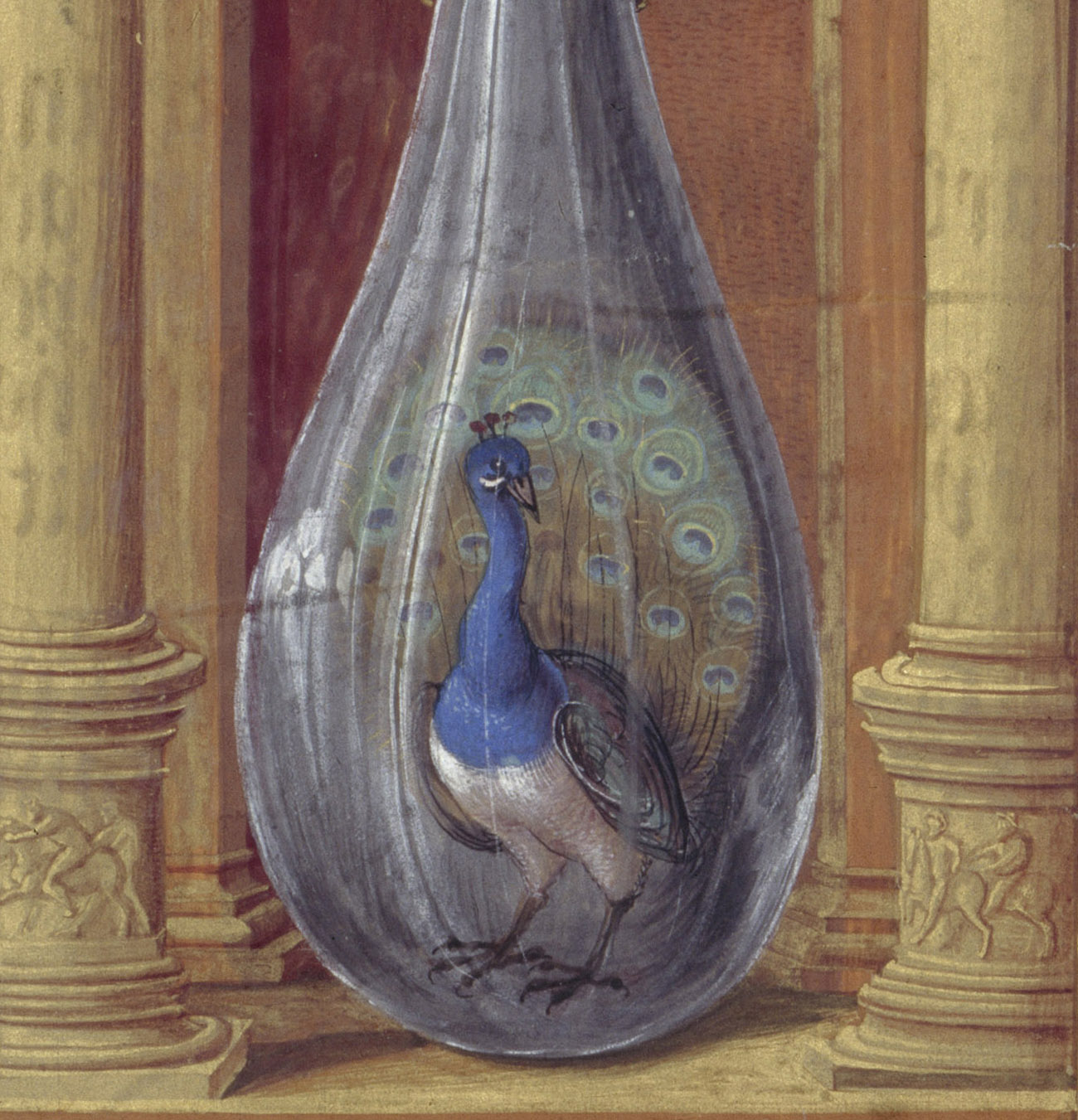
The Peacock Stage (detail), attributed to Jörg Breu the Elder, (German, ca. 1475–1537). Miniature from the illuminated manuscript Splendor solis oder Sonnenglanz, fol. 28r, 1531–32. Staatliche Museen zu Berlin, Kupferstichkabinett, Cod. 78 D 3
In alchemical writings, certain symbols, including humans, birds, and animals, stand in for particular stages of the alchemy process. The peacock, with its colorful feathers, serves as a metaphor for the phase when the greasy black contents of the alembic suddenly turn iridescent in the flask, producing a rainbow of colors like the shimmering reflection of light in an oil slick. It is known as the peacock stage, or the chemical rainbow. Where does this exceptional image come from?
It is part of the illuminated manuscript Splendor solis oder Sonnenglanz (Splendor of the Sun), one of the main works of the alchemical tradition. The original book, dated 1531 to 1532, now resides in the Berlin Kupferstichkabinett, and it formed the basis of many editions from the early sixteenth to the nineteenth centuries.
The miniatures in Splendor solis are doubtless among the most beautiful and best-known alchemical images. There are few publications on alchemy that do not depict an image from the book. William Butler Yeats praised the manuscript in his short story “Rosa Alchemica” (1913), and for James Joyce it was the inspiration for a chapter in Finnegans Wake (1939). The famous alchemist and European inventor of porcelain, Johann Friedrich Böttcher, is said to have turned to Splendor solis in pursuit of the production of gold.
The manuscript draws on earlier sources to illuminate the mysterious process of alchemy—including the peacock stage—in innovative ways. But who created this sumptuous, influential work of art?
A Legendary Author?
Salomon Trismosin, who was supposedly the teacher of the famous Paracelsus, is often mentioned as the author of Splendor solis. This attribution is particularly widespread in the English-speaking world, as the hermetic Julius Kohn published an English translation of the German text of Splendor solis in 1920 and identified Trismosin as the original author. Trismosin’s reputation as a legendary figure with supernatural powers—he is said to have lived to over 150 or even 200 years—did little to rebut this attribution.
The German text of Splendor solis is based on older alchemical writings, most of which are from the fifteenth century. Even though it is possible that there is an earlier, lost version of Splendor solis from the tail end of that century, the nature of the book indicates that it was not produced before the 1520s, as Splendor solis is based to a considerable degree on the alchemical illuminated manuscript Aurora consurgens. The original Aurora consurgens dates to around 1410, but rather than reverting to one of the Latin versions from the fifteenth century, the author of Splendor solis absorbed the richly illustrated German translation of about 1520.
The writer of Splendor solis took Aurora consurgens and turned it into a new text in a kind of patchwork process. The close relationship between the books is evident in the whole sentences and passages that the author reused.
The provenance of Splendor solis is nearly as enigmatic as its authorship. Even though the original Berlin manuscript of 1531 to 1532 is elaborate, opulent, and was expensive to produce, there is no hint as to its patron.
Breu’s Method
With the miniatures, the painter used a similar method as the author and drew inspiration from earlier sources. We are also still not entirely certain about the identity of the artist. In my 2004 monograph on Splendor solis, I attributed the miniatures to the painter Jörg Breu the Elder from Augsburg, Germany. Stylistic similarities link the book’s images to the work of this painter and contradict possible attributions to Nuremberg painters such as Nikolaus Glockendon and Sebald Beham.
In his series of ink drawings of the seven planets and their children from 1510 to 1515, Breu drew on different models of the motif, such as the Florentine series of engravings from the circle of Baccio Baldini and interpretations created north of the alps. He combined these sources to produce new depictions of the children of the planets, in a process that was particular to him. The miniatures of Splendor solis feature the same method of compilation as the ink drawings.
The use of many different images as models in the 22 miniatures of Splendor solis is particularly noticeable in the seven paintings of the children of the planets. The art-historical literature mostly ascribes the imagery to the woodcuts of Georg Pencz. Pencz’s woodcuts date to 1531, which has therefore been considered the earliest possible date for Splendor solis. But the manuscript’s artist also absorbed numerous other sources.
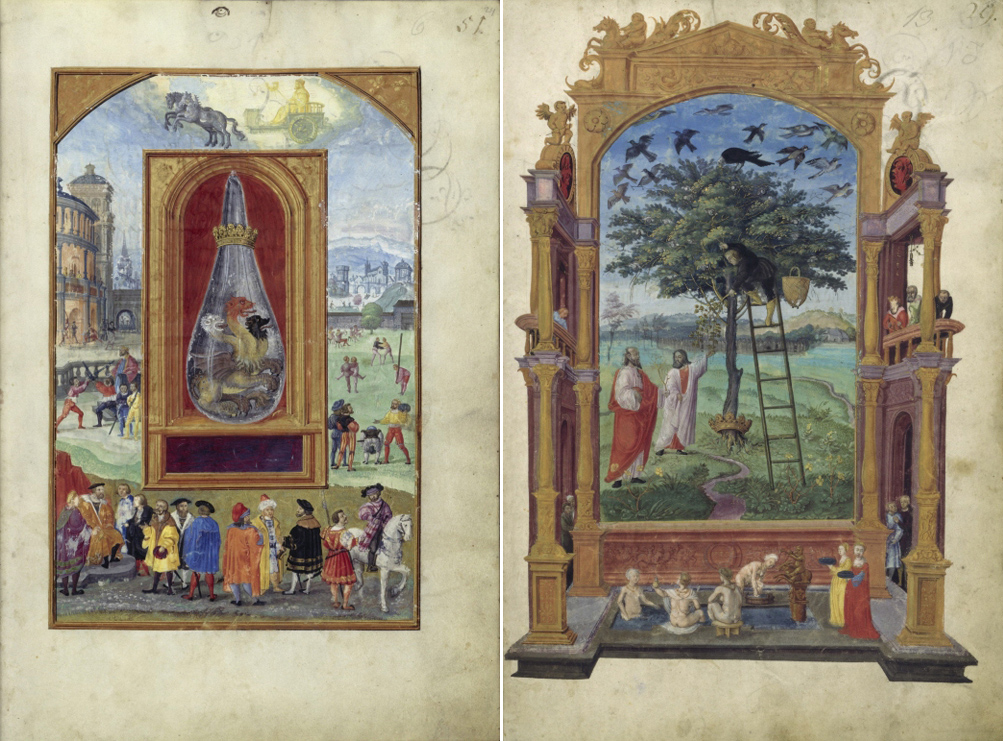
Left: Sol and His Children, attributed to Jörg Breu the Elder, (German, ca. 1475–1537). Miniature from the illuminated manuscript Splendor solis oder Sonnenglanz, fol. 24r, 1531–32. Staatliche Museen zu Berlin, Kupferstichkabinett, Cod. 78 D 3. Right: Philosopher Tree, attributed to Jörg Breu the Elder, (German, ca. 1475–1537). Miniature from the illuminated manuscript Splendor solis oder Sonnenglanz, fol. 13r, 1531–32. Staatliche Museen zu Berlin, Kupferstichkabinett, Cod. 78 D 3. Images © Kupferstichkabinett der Staatlichen Museen zu Berlin – Preußischer Kulturbesitz. Photos: Jörg P. Anders. Images licensed under a href=”https://creativecommons.org/licenses/by-nc-sa/3.0/de/deed.en”>Creative Commons Attribution-NonCommercial-ShareAlike 3.0 Germany License
Underpinning the writings and images of Splendor solis is the medieval concept of a florilegium, a collection of extracts from other texts. It is particularly noticeable in the miniatures, which are based on images from many of the best-known alchemical manuscripts. Copies of illuminated tracts such as Donum Dei, Rosarium philosophorum, and the Book of the Holy Trinity were already in circulation at the time when Splendor solis was made, and Breu used them for the creation of his miniatures.
Although Splendor solis shows a strong dependency on Aurora consurgens, the author never mentions it as a source. But the book’s title, Splendor solis or Splendor of the Sun, could contain an implicit hint at the connection—and the later manuscript’s surpassing opulence. Aurora consurgens, which translates from Latin as the rising dawn, is followed by splendor solis, the shining sun. With the title, the mastermind of this work expressed how the book was consciously conceived as the most splendid work of all alchemical manuscripts.
The miniatures, which were inspired by illustrations from earlier alchemical manuscripts, shine brighter than their predecessors and eclipse their beauty and grandeur. The sun stands at the zenith of the sky, and the Splendor solis can rightly be called the climax of alchemical imagery.
Merging Alchemy with Astrology
Featured in seven of the miniatures in Splendor solis, the planet-children constitute an important iconographical element of the manuscript. The series features the seven planets of the Ptolemaic system—Saturn, Jupiter, Mars, Sun, Venus, Mercury, and Moon—which were revered as deities. In each of the miniatures, one of the seven planetary gods presides over a group of people on earth below whose lifes are shaped by the characteristics of the god in question. They are designated as that deity’s children
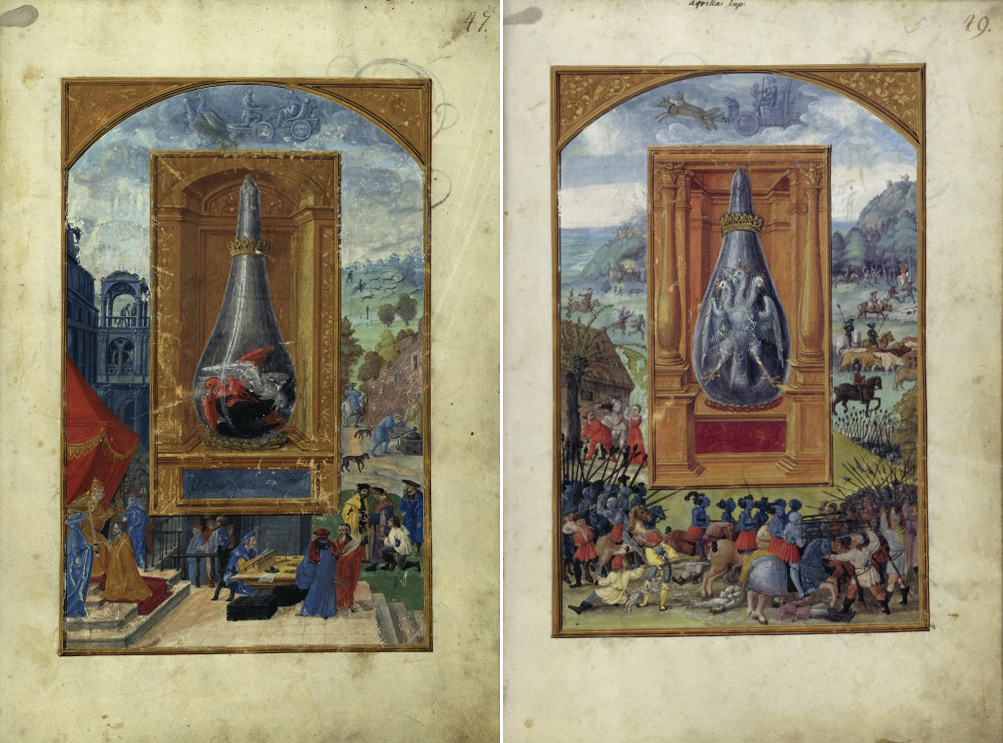
Left: Jupiter and His Children, attributed to Jörg Breu the Elder, (German, ca. 1475–1537). Miniature from the illuminated manuscript Splendor solis oder Sonnenglanz, fol. 22r, 1531–32. Staatliche Museen zu Berlin, Kupferstichkabinett, Cod. 78 D 3. Right: Mars and His Children, attributed to Jörg Breu the Elder, (German, ca. 1475–1537). Miniature from the illuminated manuscript Splendor solis oder Sonnenglanz, fol. 23r, 1531–32. Staatliche Museen zu Berlin, Kupferstichkabinett, Cod. 78 D 3. Images © Kupferstichkabinett der Staatlichen Museen zu Berlin – Preußischer Kulturbesitz. Photos: Jörg P. Anders. Images licensed under a href=”https://creativecommons.org/licenses/by-nc-sa/3.0/de/deed.en”>Creative Commons Attribution-NonCommercial-ShareAlike 3.0 Germany License
The planetary series in Splendor solis deviates from all its counterparts in one significant regard: there is a panel at the center of each miniature featuring a glass vessel. This picture within a picture showcases a particular alchemical stage. Over the course of the series, the process of transmutation is illustrated in seven phases, with each one symbolized by the contents of the glass container.
The combination of the planet-children iconography with this series of alchemical vessels appears to have been an original idea on the part of Breu, for there are no other existing examples. It is also the only concrete instance of the blending of alchemical and astrological iconography.
The dimensions of the glass flasks and the tabernacle-like character of the niches create a quasi-sacred atmosphere, the majesty of which is heightened by the inclusion of a crown and, in some cases, an additional laurel wreath. The motif of the glass vessel filled with various symbolic contents is featured in allegorical alchemical miniatures dating as far back as the late fourteenth century; it may have been inspired by technical drawings in earlier alchemical manuscripts.
These containers also exhibit a remarkable likeness to medieval depictions of the fetus inside the womb, for they bear a striking resemblance to the motif of the homunculus, a human being generated artificially within the alchemist’s alembic. Such illustrations might be regarded as the forerunners of the painted glass flasks in numerous fifteenth-century illuminated manuscripts.
The only pre-existing sequence of pictures illustrating the various stages of the alchemical process in this manner can be found in editions of Donum Dei, originally created in the second half of the fifteenth century, which likely served as the main model for this section of Splendor solis. Whereas Donum Dei features twelve uncrowned flasks, Splendor solis includes seven crowned glass vessels, which invoke the seven planets and the metals attributed to them. In three instances, the painter copied the contents of flasks from Donum Dei: the dragon, the white queen, and the red king.
The Peacock Stage
Both Splendor solis and Donum Dei include images of the so-called peacock stage, the colorful apparition part of the transmutation process. In contrast to Donum Dei, which depicts the chemical reaction as a series of brightly colored dots inside a black flask, the painter of Splendor solis opted to use a figurative symbol, the peacock contained within a glass vessel.
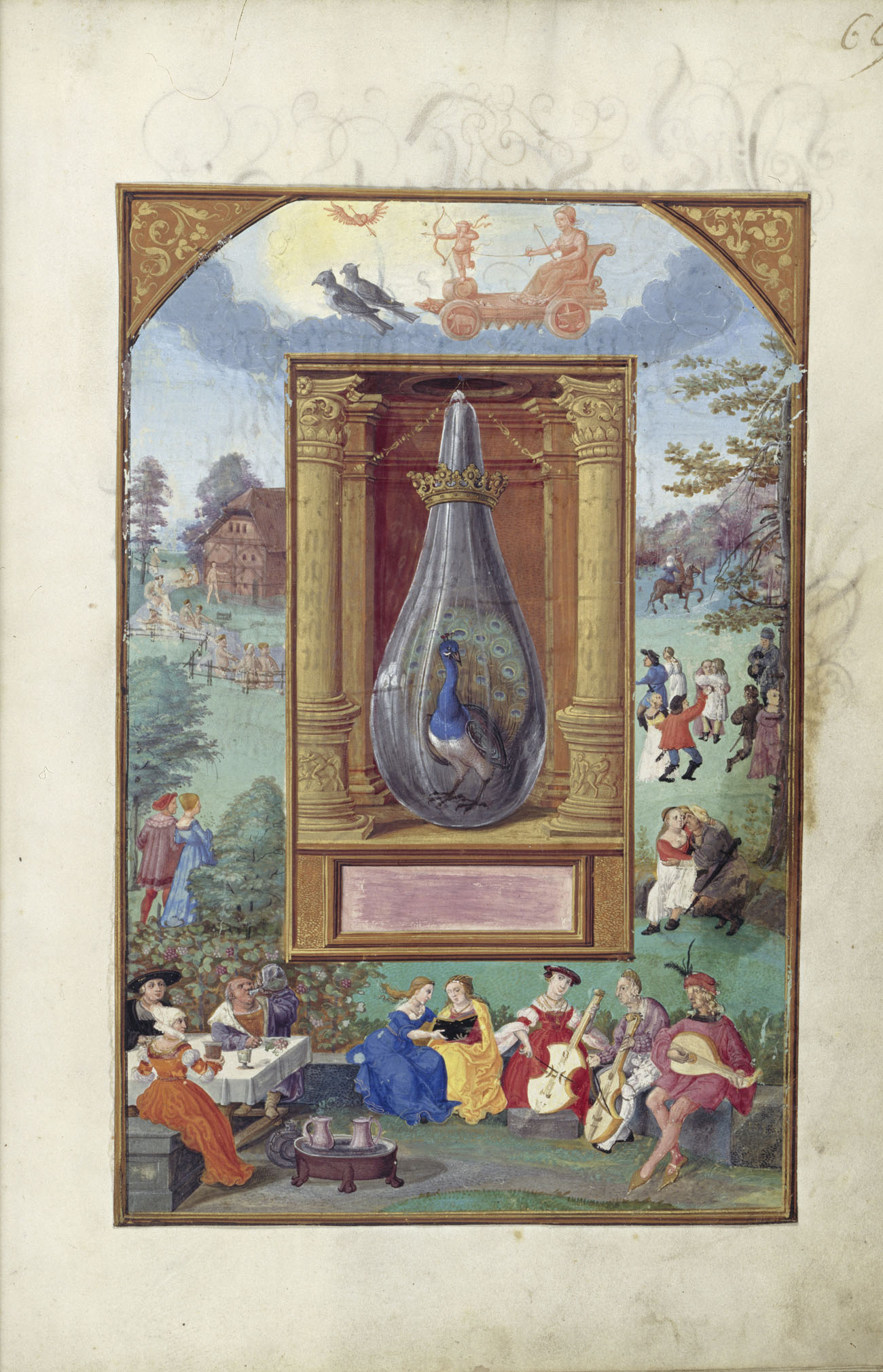
The Peacock Stage, attributed to Jörg Breu the Elder, (German, ca. 1475–1537). Miniature from the illuminated manuscript Splendor solis oder Sonnenglanz, fol. 28r, 1531–32. Staatliche Museen zu Berlin, Kupferstichkabinett, Cod. 78 D 3
At the top of the miniature is an image of Venus in an orange chariot with two doves harnessed to the front. In her left hand she holds an arrow, while her right hand grasps a rope connected to Cupid. Leashed and blindfolded, Cupid balances on one leg at the front of the chariot, poised to shoot an arrow with his bow. The depiction of the planetary goddess, enwreathed by clouds and illumined by a bright light, is accompanied by a winged heart, which is pierced by an arrow and lingers in the sky. Venus’s realm is characterized by pleasure, amusement, joy, and beauty.
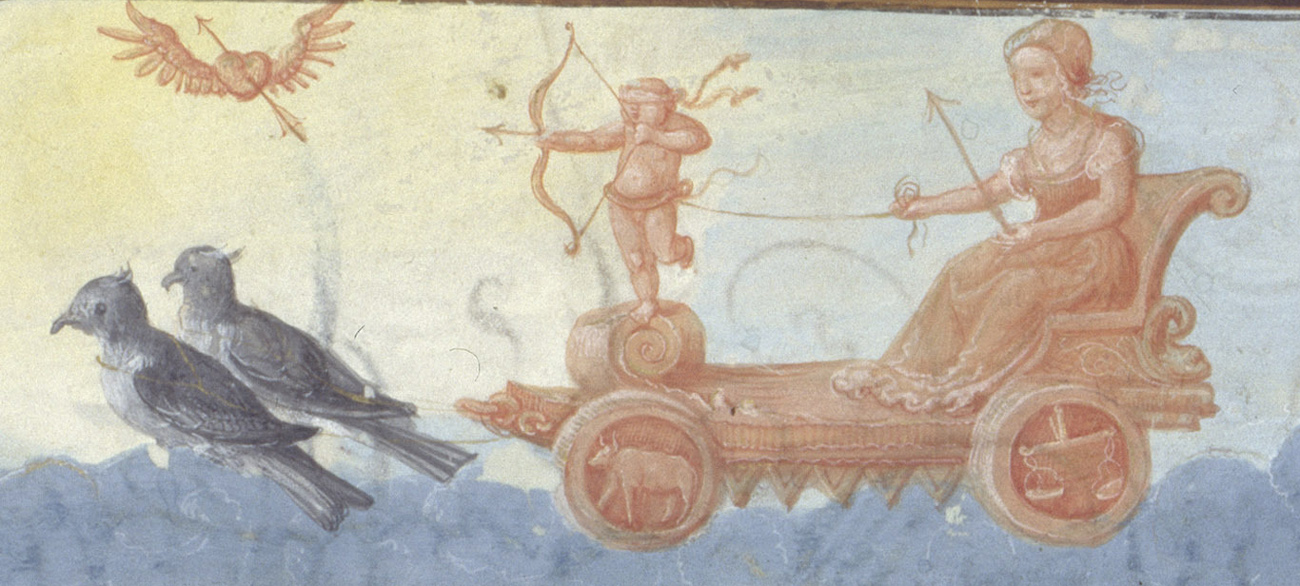
Detail of Venus, cupid, doves, and winged heart in The Peacock Stage, attributed to Jörg Breu the Elder, (German, ca. 1475–1537). Miniature from the illuminated manuscript Splendor solis oder Sonnenglanz, fol. 28r, 1531–32. Staatliche Museen zu Berlin, Kupferstichkabinett, Cod. 78 D 3
Surrounding the central panel are images of various outdoor activities in the earthly realm. A courtly scene at the bottom of the miniature illustrates the corporeal pleasures of eating and music.
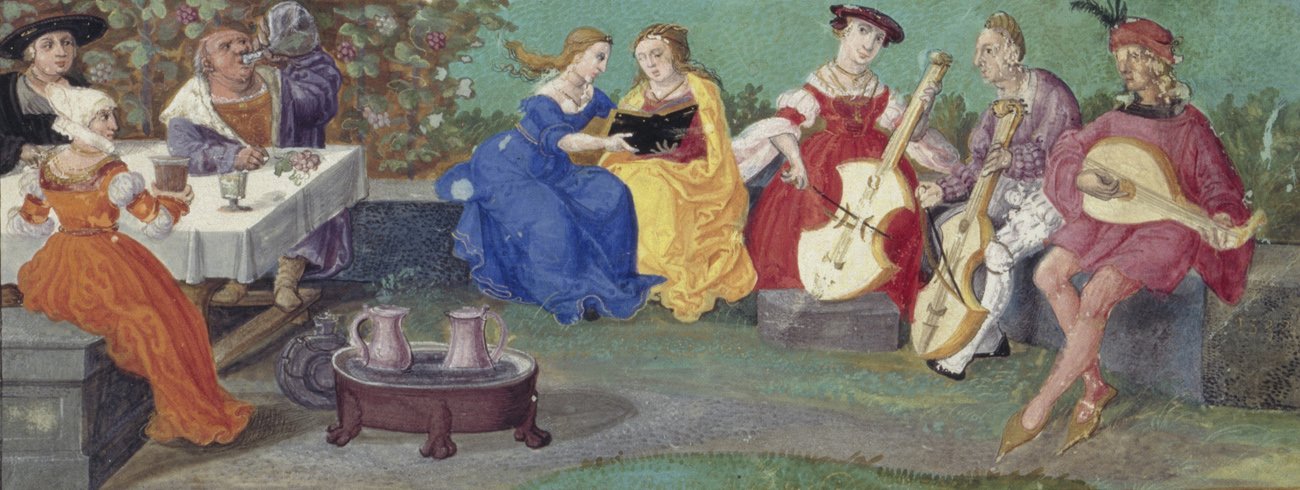
Detail of the pleasures of eating and music in The Peacock Stage, attributed to Jörg Breu the Elder, (German, ca. 1475–1537). Miniature from the illuminated manuscript Splendor solis oder Sonnenglanz, fol. 28r, 1531–32. Staatliche Museen zu Berlin, Kupferstichkabinett, Cod. 78 D 3
The right side of the painting is dedicated to the rural stratum of society, a rather unusual group for the children of Venus. A peasant fair with a bagpiper and dancing pairs is framed by two lovers caressing in the shade of a tree and a couple setting out on a horse ride.
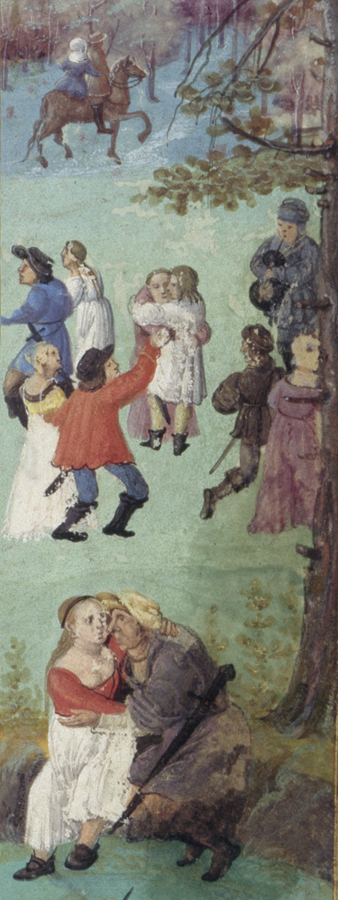
Detail of the rural stratum in The Peacock Stage, attributed to Jörg Breu the Elder, (German, ca. 1475–1537). Miniature from the illuminated manuscript Splendor solis oder Sonnenglanz, fol. 28r, 1531–32. Staatliche Museen zu Berlin, Kupferstichkabinett, Cod. 78 D 3
The music making, playing, and dancing of the planet-children can be regarded as a prelude to the so-called “Chymical Wedding”—the joining of male and female spirit and body—that reflected alchemists’ aspiration to unite opposites into a cosmic unity. As it happens, the two bird species tied to Venus that appear in the miniature were widely regarded as aphrodisiacs: peacock meat was believed to increase male potency, and dove meat was said to elevate the libido of women.
Merging Venus’s realm with the symbolic peacock, the artist of Splendor solis crafted a novel way of illustrating the mysterious process of alchemy that would reverberate throughout the centuries.
_______
See this illumination of The Peacock Stage in the exhibition The Art of Alchemy at the Getty Research Institute (October 11, 2016–February 12, 2017).
For discussion of an illuminated copy of the Splendor solis in the British Library, see Jörg Völlnagel, “Harley MS. 3469: Splendor Solis or Splendour of the Sun—A German Alchemical Manuscript” in The Electronic British Library Journal (eBLJ) 2011, Article 8, available online here.
Jun 5, 2020
Jun 3, 2020
Masonic Checkerboard Theme (requires a Pinterest account):
spacer
Jun 5, 2020
Monarch theme (requires a Pinterest account):
Jun 5, 2020
Link: https://fightingmonarch.com/
A Resistance Site For Victims of CIA, NSA, MI5 and Illuminati Mind Control
MK-ULTRA SATANIC CARTEL SIGNALING: FROM MILEY CYRUS TO THE BEATLES
For an older person like me, it’s easy to see how stupid a lot of pop music is. I guess that’s how my parents felt.
More specifically, I see how CIA manipulates victims like Miley Cyrus through PROJECT MONARCH.

The scum at CIA rape and torture people.Under MK-ULTRA, the victims are placed under mind control, a process described by Svali, Cisco Wheeler, and Fritz Springmeier.
Svali Speaks: Breaking The Chain
Books by Fritz Springmeier ; Cisco Wheeler on Illuminati Mind Control Techniques

Through cartel signaling, the satanic trash that perpetrate these crimes love to advertise their abuse of victims.
Here’s Mia Khalifa, a porn star about whom I have written elsewhere, with an inverted cross and pentagram, advertising satanism, spilling fluid over her body from two bottles, suggesting male sex organs….
Mia Khalifa, Sex Kittens, and Second Amendment Rights
Mia Khalifa and Satanic Cartel Signaling

And here’s Mia with pizza, of all things, over her breasts.

This strange behavior suggests Pizzagate, a scandal involving satanism, cannibalism, pedophilia, and human trafficking, under which the Clintons and the Podestas are implicated.
Ritual Sexual Abuse of Children in Hollywood, Washington, ; Elsewhere
Child Sexual Abuse Underlies the Deep State: A Conspiracy of Silence
In the program, monarch butterflies appear around victims.

That makes sense because CIA calls this system of abuse PROJECT MONARCH.

Tiger, leopard, and zebra prints are another sign of MONARCH programming.
The animal patterns indicate sexual slavery.

Victims appear flashing Illuminati hand signs and surrounded by cartel signaling.

Like livestock, they are branded with tattoos.

After their memories are erased by hypnosis, drugs, and electroshock, victims think their misbehavior is their own idea
Why We Don’t Remember: CIA’s Use of Scopolamine (Hyoscine), Burundanga, or Devil’s Breath

They provide terrible models for young girls.
I have written elsewhere about the ways in which CIA used women who posed for Playboy, but most of those women came through clean compared to the girls in show business.
The Playboy Mansion, Blackmail, and Rape
Playboy, Satanic Cartel Signaling, and the Computerization of Women

It’s easy to see with Miley Cyrus or Madonna—not to mention Disney stars like Lindsey Lohan and Britney Spears.

But it took much longer for me to find cartel signaling in the music I grew up with.
God knows why….

Take the Beach Boys for example.MK-ULTRA did a number and a half on Brian Wilson.This guy has MK-ULTRA written all over him.He grew up within shouting distance of Disneyland, a mind control hotbed which played a part in Susan Ford’s and Debra Winger’s abuse.
Thanks for the Memories by Brice Taylor a/k/a Susan Ford
MK-ULTRA Wonder Girl: Television Programming, Fake Feminism, & New World Order

Wilson was the captain of his high school football team and the leader of America’s favorite band.He wrote terrific music, with incredible harmonies, but his life came apart as soon as he tried to write about something other than girls, cars, and beach scenes out of a movie with Frankie Avalon, Annette Funicello, or Gidget. Wilson had a nervous breakdown, stopped touring, and spent years in his bedroom, doing drugs and masturbating.

As I’ve mentioned before, MK-ULTRA loves to move people over, not only to perversion, but to pornography.
Pornography, Masturbation, and Why To Avoid It
Wonder Woman, Mind Control, and Rape

Brian Wilson had a nervous breakdown, and he hears voices.Those are symptoms of voice to skull (V2K) under MK-ULTRA—not insanity.
V2K – Voice To Skull (A Quick Introduction)
Mind Control and Misdiagnosis of Physical & Behavioral Symptoms
Patents for Mind Control Technology

Wilson’s brother was associated with Charles Manson, a cult leader responsible for murders in Los Angeles, who programmed his “family” to music by the Beatles.

Here you see Wilson flashing the Eye of Horus.The poor bastard thinks it means he’s okay, but his masters at CIA are laughing.That’s the point of cartel signaling.

If you don’t believe that sign is the Eye of Horus, check out my second article on Playboy—not to mention the following picture.
Playboy, Satanic, Cartel Signaling, and the Computerization of Women

The Eye of Horus is also featured in The Prisoner, which you can watch below.
The Prisoner (1967): I Am Not A Number–I Am A Free Man!!!

All that from the Beach Boys, who seemed so innocent, but that’s nothing when you look at the Beatles, who, after all, put Aleister Crowley, the Great Beast, grandfather of George W. Bush, on the cover of Sergeant Pepper.

Here is Paul McCartney, flashing the Eye of Horus, with John Lennon, sporting devils’ horns.

Here Lennon doubles down on the horns, while McCartney makes owl’s eyes.

The owl is an Illuminati symbol, which we see in Washington, D.C.
Child Sexual Abuse Underlies The Deep State

We also find the owl at the Bohemian Club and Bohemian Grove, Illuminati hang-outs where Cathy O’Brien, her daughter, and others were raped in the most horrific ways.
Cathy O’Brien: An American Hero

That abuse still happens.
I will trust the government when they explain Bohemian Grove….

But to return to the Beatles, here’s John Lennon, again, flashing devil’s horns.
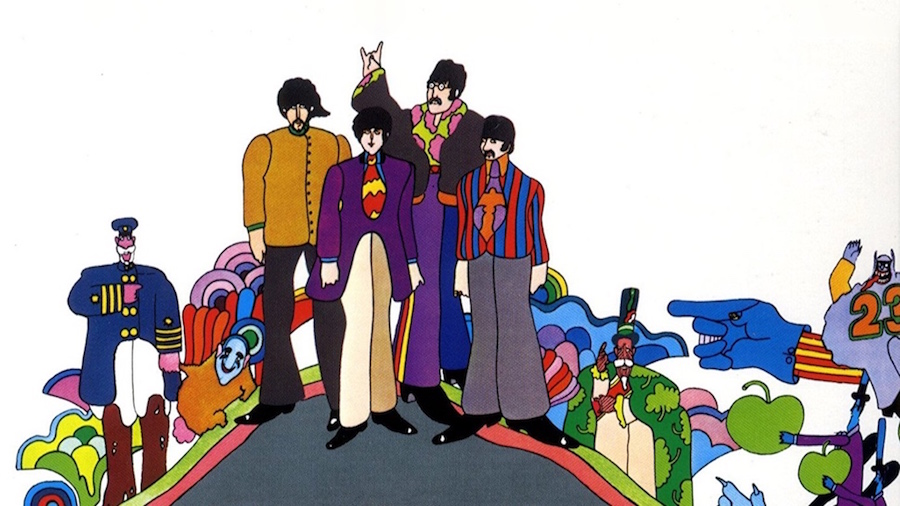
That hand sign is just as common among the Illuminati, the Masons, and their victims as the Eye of Horus.

Here’s McCartney with the Square and Compass.

Here’s the same masonic symbol with the All Seeing Eye.

Here’s McCartney with the All Seeing Eye.

But maybe the most pernicious is the “peace” sign, which is, in reality, masonic.

That sign was around long before the hippies showed up.

Here’s Ringo Starr, wearing the satanic colors of red and black, with five-pointed stars (pentagrams), flashing the v sign—all without a clue that his masters are mocking him.

You can read below about the use of that signaling around Sarah Palin and Lynda Carter.
Sarah Palin, Superheroines, and Rape
The Whore of Babylon: Lynda Carter, Fake Feminism, and the New World Order
Otherwise, here’s Yoko Ono, looking like the devil incarnate, flashing the same sign.

Did I mention that Yoko had a lesbian affair with Hillary Clinton, who is a Grande Dame of the Illuminati?

And here’s poor John Lennon, who, like Ringo, thinks that sign means peace.

Here’s George Harrison—looking like Satan, or is it Jesus—with cartel signaling to indicate that his “private life” is connected to “the catholic church’s secret sex crime files.” Remember he was the only Roman Catholic among the Fab Four….
Bergoglio: Pope Francis Is The Antichrist

This got me thinking….What about that crazy White Album, the one I never liked, the one Charles Manson used to program his “family” to kill people.

In case you forgot, Manson is a programmer identified by Fritz Springmeier and Cisco Wheeler, in their books on MK-ULTRA, who wanted to start a race war to the tune of Helter Skelter.
People used to say you could play records backwards to find satanic messages.I thought they were crazy—but here’s the Beatles’ Revolution No. 9, to which Yoko Ono contributed.Played normally, it sounds awful.
Again, that’s from the White Album.I never liked that one; and, if you asked me about it, I would have said that John took too much LSD and he fell in love with the wrong woman—a woman who subsequently claimed he was bisexual….
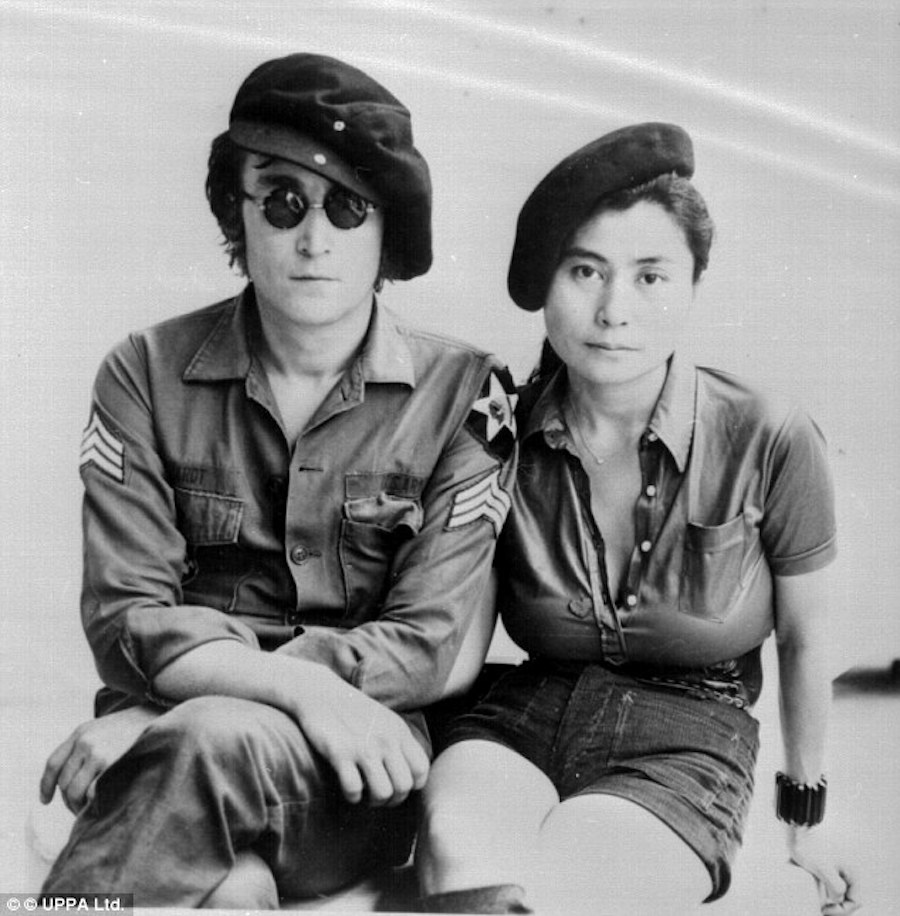
Nowadays I don’t have to ruin an LP to hear it backwards—not that I would mind with the White Album—so I went online and found the recording below. Played backwards, Revolution No. 9 actually contains lyrics like “Satan look at me.”
Judge for yourself….
There was a lot of satanism in the town where I grew up, Westfield, New Jersey, but, just as with the Beatles, I could not see it.
Growing Up in the Satanic Enclave of Westfield (Part One)
Growing Up in the Satanic Enclave of Westfield (Part Two)

I believe the Beatles were innocent—and they wrote beautiful songs—but something is wrong here.
It seems plain that MK-ULTRA—along with the Illuminati, the Tavistock Institute, the Freemasons, and the CIA—played a role in the Beatles’ rise to fame.How else can we explain so much cartel signaling?
John Lennon fought back—and they killed him.

Return to my homepage, where you can scroll through more articles, by clicking the site title at the top of the page or at www.fightingmonarch.com
Follow my website, which you can easily do for free. That way you can get new articles as they come out.
And please retweet or share as many articles as possible.
Our enemy depends on silence.


#mindcontrol #mkultra #laurelcanyon #hollywood #hollyweird #castingcouch #marilynmonroe
Whitney Houston, the Devil in the Details ; The Satanic Sacrifice of the Symbolic Black Diva
“Capture and Kill the Divine One”
The Black Diva “Divine One” of the Ancients, Queen Ahmose Nefiteri, (1562-1495 BC), reigned at one of the most important religious paradigm shifts in human recorded history. During her time, Rulers of Foreign Countries (Hyskos) had overrun the Land of Kemet (Egypt) for the first time in its history. The Hyskos and the God Set (Chaos) ruled Kemet for over 200 years. Somehow, they had been forewarned that the “Divine One” represented Kemet’s Providence and Prophesy. For decades, the “Divine One” had been one of the “Most Wanted” of the Ancient World; “Capture and Kill the Divine One” had to have been their battle cry.
Their premonition of Kemet’s Providence was correct. When they found the Black Diva, it was at the head of the nation’s armies. Queen Ahmose Nefiteri had rallied her nation to resist their occupation and rule. The “Divine One” and her brother, King Ahmose I (1550–1525 BC), expelled the Hyskos from Kemet and brought the cosmic forces (Order-Chaos; Good-Evil) in balance once again.
Queen Ahmose Nefiteri was the grandmother of the 18th Dynasty, the Golden Age of Kemet (Egypt). In her line of descent are the Great Pharaohs’ Thutmoses, Hatshepsut (Queen Makere), Amenhoteps, and Tutankhamen. The Queen’s great grandson, Akhenaten (Amenhotep IV 1353-1335 B.C.E.), has to be one of the most important pre-Christianity figures of human history. Without Akhenaten, there most likely would be no “Moses.” There would have been no Christianity as we know it today. It is a turning point in history that the Lords of Chaos have never forgotten, if only for a twinkle of time.
 Whitney Houston, The Symbolic Black Diva
Whitney Houston, The Symbolic Black Diva
In the 21st Century, the Black Diva was no myth. For the week summing up the 2012 Grammys, Whitney Houston had to have been one of the Grammy’s most important, celebrated and influential international musical icon and poster girl. Whitney Houston was the most awarded female artist of all time, according to Guinness World Records, with two Emmy Awards, six Grammy Awards, 30 Billboard Music Awards, 22 American Music Awards, among a total of 415 career awards as of 2010. She held the all-time record for the most American Music Awards of any female solo artist and shared the record with Michael Jackson for the most AMAs ever won in a single year with eight wins in 1994. Houston won a record 11 Billboard Music Awards at its fourth ceremony in 1993. She also had the record for the most WMAs won in a single  year, winning five awards at the 6th World Music Awards in 1994.[1]
year, winning five awards at the 6th World Music Awards in 1994.[1]
In May 2003, Houston placed at number three on VH1’s list of “50 Greatest Women of the Video Era”, behind Madonna and Janet Jackson. She was also ranked at number 116 on their list of the “200 Greatest Pop Culture Icons of All Time”. In 2008, Billboard magazine released a list of the Hot 100 All-Time Top Artists to celebrate the US singles chart’s 50th anniversary, ranking Houston at number nine. Similarly, she was ranked as one of the “Top 100 Greatest Artists of All Time” by VH1 in September 2010. In November 2010, Billboard released its “Top 50 R;B/Hip-Hop Artists of the Past 25 Years” list and ranked Houston at number three whom not only went on to earn eight number one singles on the R;B/Hip-Hop Songs chart, but also landed five number ones on R;B/Hip-Hop Albums. [2]
Houston’s debut album is listed as one of the 500 Greatest Albums of All Time by Rolling Stone magazine and is on Rock and Roll Hall of Fame’s Definitive 200 list. In 2004, Billboard picked the success of her first release on the charts as one of 110 Musical Milestones in its history. Houston’s entrance into the music industry is considered one of the 25 musical milestones of the last 25 years, according to USA Today in 2007. It stated that she paved the way for Mariah Carey’s chart-topping vocal gymnastics. In 1997, the Franklin School in East Orange, New Jersey was renamed to The Whitney E. Houston Academy School of Creative and Performing Arts. In 2001, Houston was the first artist ever to be given a BET Lifetime Achievement Award. [3]
 The Black Diva was also one of the world’s best-selling music artists, having sold over 200 million albums and singles worldwide. Although she released relatively few albums, she was ranked as the fourth best-selling female artist in the United States by the Recording Industry Association of America, with 55 million certified albums sold in the US alone. Premiere magazine named Whitney Houston as one of the 100 most powerful people in Hollywood. In October 1994, she attended and performed at a state dinner in the White House honoring newly elected South African president Nelson Mandela.[4] The Black Diva was also a priceless human commodity. She could make stock corporate rise and fall.
The Black Diva was also one of the world’s best-selling music artists, having sold over 200 million albums and singles worldwide. Although she released relatively few albums, she was ranked as the fourth best-selling female artist in the United States by the Recording Industry Association of America, with 55 million certified albums sold in the US alone. Premiere magazine named Whitney Houston as one of the 100 most powerful people in Hollywood. In October 1994, she attended and performed at a state dinner in the White House honoring newly elected South African president Nelson Mandela.[4] The Black Diva was also a priceless human commodity. She could make stock corporate rise and fall.
Whitley Houston was not only a Mega Super Star, but a Symbolic Black Diva if every there could be one. She wasn’t controversial, but you must understand her awesome power in very being on the world stage. Her mere presence destroys and dispels global racial myths and stereotypes. Her brief solo below is still counted among America’s most electrifying singing performances and moments in television history. Official U.S. Policy, “Prevent the rise of a “Black Messiah, who could unify and electrify the masses…”
 She was a woman with a “Treasury of Melanin”[5] played out in the international entertainment world domain that all could see. When you experience Whitney Houston, you actually see the explosion of divine life force and creative energy. The true magic of Whitney is that she could absorb energy from sources such as light, heat; electricity, sound (music) and use this energy in the body as fuel to explode into other dimensions. In Whitney, you can see the miraculous works of the Black Dot (Pineal Gland) and “Melanin Magic” that rises from the lower nature to higher untapped spiritual natures.
She was a woman with a “Treasury of Melanin”[5] played out in the international entertainment world domain that all could see. When you experience Whitney Houston, you actually see the explosion of divine life force and creative energy. The true magic of Whitney is that she could absorb energy from sources such as light, heat; electricity, sound (music) and use this energy in the body as fuel to explode into other dimensions. In Whitney, you can see the miraculous works of the Black Dot (Pineal Gland) and “Melanin Magic” that rises from the lower nature to higher untapped spiritual natures.
The Greatest Love of All
| If I fail, if I succeed At least I’ll live as I believe No matter what they take from me They can’t take away my dignity Because the greatest love of all Is happening to me |
I found the greatest love of all Inside of me The greatest love of all Is easy to achieve Learning to love yourself It is the greatest love of all |
The Black Diva taught the global poor and oppressed that to truly see (discovery) ourselves amidst great odds (psychological warfare) and power ( ILLUMINATI) in the divine (GOD) was the greatest of gift of all to liberation. Her very essence transcended race, class and power and that is what made her dangerous and a threat to the ruling classes and power structure of the LUCIFERIAN ILLUMINATI.
The Devil in the Details: The Setup
FEBRUARY 2 to 7, 2012
 Whitney arrived in Los Angeles sometime around or before Thursday, February 2, 2012 with a large entourage of family, friends and co-workers. On Thursday, she was spotted leaving a Beverley Hills doctor’s office. On Satruday, February, 4, 2011, she was spotted with Brandy’s littler brother, Ray J, at West Hollywood’s La Petit Four.
Whitney arrived in Los Angeles sometime around or before Thursday, February 2, 2012 with a large entourage of family, friends and co-workers. On Thursday, she was spotted leaving a Beverley Hills doctor’s office. On Satruday, February, 4, 2011, she was spotted with Brandy’s littler brother, Ray J, at West Hollywood’s La Petit Four.
For whatever reasons, mass media reports have been very selective about Ray J and Whitney Houston from February 2 to Thursday, February 9, yet it appears from some sources that he had been her constant secret companion.
You would assume that the U.S. Homeland Security, LAPD, and Beverly Hilton Hotel Security Staff would have been under some type of terrorism alert; Grammy VIPs and clients would be under tight security and surveillance preceding the event. You would think that traffic would be controlled, employees, guests, and visitors surrounding the 2012 Grammys would be checked and cleared.
Ordinarily, at the least, hotel security would coordinate with VIP protective details well ahead of the event and their arrival in Los Angeles. Yet, they want us to believe that this nation’s biggest and most important entertainment industry celebrity VIP and precious corporate human commodity was left to run “Willy Nilly” in Los Angeles; to romp, skip and jump through the city and the Beverly Hilton Hotel without security or surveillance.
The Times reported that days before her death, Whitney was reportedly wandering aimlessly alone through the Beverly Hilton, inebriated “smelled of alcohol and cigarettes”, roving through the lobby, halls and ballrooms disoriented, disheveled in mismatched clothes and hair dripping wet, acting strangely skipping around a ballroom and reportedly doing handstands near the hotel pool.[6]
During this time, they want the public to really believe that America’s most important and visible entertainment icon attending the 2012 Grammys Award Celebrations was open to being kidnapped, assaulted or assassinated by a foreign terrorist, stalker or sick assailant. It would have been like 9-11, it could have caught U.S. Homeland Security, Local and State Police and America’s Private Security Industry with their draws down again.
They want the public to believe that Whitney Houston was left Willy Nilly disheveled, disorientated, stumbling, bleeding,[7] and alone in Los Angeles. If Whitney Houston was left alone on this national high profile occasion -it’s because it had been planned. They know exactly who she was with minute by minute, and hour by hour of every day that she was at the Beverly Hilton. Yet, Ray Jis always allowed to lurk in the background.
If Whitney Houston was left without eyes and ears, a professional security team, its because Clive Davis wanted it that way. They wanted her in corrupt and compromised Los Angeles, the site and center of the cover-up of Michael Jackson’s assassination by the ILLUMINATI.
The Black Diva was setup from the beginning, drugged, programmed with self destruct alters, and dropped in the middle of a bunch of dysfunctional and messy MK ULTRA/ILLUMINATI/LUCIFERIAN BLOOD OATH Negroes; and all they had to do was just walk away. It’s a perfect backdrop for a powerful racialist multi-million dollar white corporate structure to get away with first degree murder and cash in on multi-million dollar insurance policies. That’s exactly what Philip Anschutz (AEG) did to Michael Jackson in the very same venue.[8]
The Devil in the Details: Clive Davis and the Paradigm Shift
Clive Davis born in 1932 in New York is an elite music industry executive made and maintained by privilege, class, race and oligarchy. In 1966, Columbia Broadcasting System (CBS) reorganized its corporate structure which made CBS Records a separate-special unit of CBS controlled by Clive Davis.
 Davis was born and rose from the Columbian ILLUMINATI of New York.[9] According to the late investigative reporter Eustace Mullins, Clive Davis’ benefactor in 1966, CBS’s late Founder and Chairman of Board William S. Paley, was both a conduit and operative for the CIA. Many directors of CBS had CIA ties.[10]
Davis was born and rose from the Columbian ILLUMINATI of New York.[9] According to the late investigative reporter Eustace Mullins, Clive Davis’ benefactor in 1966, CBS’s late Founder and Chairman of Board William S. Paley, was both a conduit and operative for the CIA. Many directors of CBS had CIA ties.[10]
The CIA learned the art of deception by overlaying its inner core group with members of elite secret blood oath societies from the country’s fore fathers and most recently from the Nazis. Whereas, their primary duties become maintaining secrecy instead of the U.S. Constitution.
The CIA has had long covert associations with major mainstream news publications. By far the most valuable of these associations, according the CIA officials, have been CBS. “The CIA even ran training programs to teach agents to be journalists who were then placed or ‘embedded’ in major news organizations with help from management. The goal is informational-management designed by leading behavioural scientists from academia, or in CIA jargon, a psychological operation with which to secure a specific and predictable reaction from unsuspecting consumers of news.”[11] The specific and predictable reaction that they want is undoubtedly forms of white supremacy (oligarchy), mind and behavior control of the masses.
The CBS Records Group was led by Clive Davis until his dismissal in 1972, after it was discovered that he had used CBS funds to finance his personal life, including an expensive bar mitzvah party for his son. We call it elite white collar corporate felony embezzlement with criminal impunity.[12]
In March 1968, CBS and Sony formed CBS/Sony Records, a complex Japanese business joint venture. It also started the process of bringing Arista Records back under common ownership with its former parent Columbia Pictures, a Sony division since 1989. It also brought Arista founder and corporate embezzler Clive Davis back into the spotlight as Sony Music’s Chief Creative Officer.[13] White corporate ILLUMINATI criminals like Clive Davis from an ILLUMINATI background and CIA asset like CBS, they have their privileges that transend the law.
Davislives with a male partner who’s a physician. They live in a Vicente Wolf-decorated apartment on East 57th Street and spend weekends in Pound Ridge, NY.[14] Reportedly, he first discovered 19-year-old Whitney Houston in her gospel-singer mother’s cabaret act in a club called Sweet Waters in Manhattan. He signed Whitney to a contract with Arista Records. Clive Davis was responsible for molding and guiding Houston’s early career.
Remember before his assassination, Michael Jackson exposed Sony and its business executives, and administrators, such as Sony President Tommy Mottola as “devils” and “racists,” and blamed people at that company as well as others for creating a “conspiracy” against him by tarnishing his image with child sex abuse accusations because they wanted to emotionally and financially break him to gain the rights to his 50 percent share ownership of the Sony-ATV music publishing catalog that includes the lucrative Beatles Music Catalog
In June 2011 on L.A. radio station KOST 103.5′s morning show, Davis admitted that he had lost interest in Whitney Houston. Davis flat out said he would never get back on the bandwagon with Whitney unless her graceful voice returned. Davis said “Whitney has admitted that she’s had to conquer a drug addiction. That takes all of her energy. She also has had a very difficult time giving up cigarettes. In comparison, it sounds slight. But if you do have a cigarette problem in this instance, you can’t give it up. It is taking all of her energy. I know that she’s committed to do it. I know that she loves music. Right now she’s dealing with that situation and we’re not going to make another record or an album until that golden voice is there and is fully capable to knock everyone out.”[15]
 Contrast Davis’ statement with the music industry treatment of white British Pop Singer, Adele. She received a lot of attention when she developed voice problems that affected her singing. Her voice problems were attributed to her inability to stop smoking. To protect her very special voice as some sort of national treasury, doctors ordered her to cancel tour and promotional appearances; rest, recovery and special attention for almost a year.
Contrast Davis’ statement with the music industry treatment of white British Pop Singer, Adele. She received a lot of attention when she developed voice problems that affected her singing. Her voice problems were attributed to her inability to stop smoking. To protect her very special voice as some sort of national treasury, doctors ordered her to cancel tour and promotional appearances; rest, recovery and special attention for almost a year.
Subsequently, the 23-year-old Grammy winner was sent to the United States- Boston to undergo special throat laser microsurgery with Dr. Steven Zeitels, Director of the Massachusetts General Hospital Voice Center.[16]
As Whitney Houston lay in the Los Angeles Coroner’s office, Adele with surgical repaired vocal cords performed and took home six Grammys including the prestigious trifecta of record, song and album of the year.[17] Adele’s record label is Columbia Records.[18] Columbia Records is an American record label, owned by Sony Music Entertainment.[19]
Clive Davis is not interested in Whitney Houston as a human being and friend, or her music for the sake of uplifting, healing and spiritual inspiration. His concern is mass media manipulation, regulation and control. He is a Luciferian/ILLUMINATI regulator that conspires in all things in a secret paradigm shift to ruthlessly control the flow, content and message of Black Music and artists, and the minds of the masses, globally.
The Devil in the Details: the Suppression, Fall and Death of Another Black Diva, Phyllis Hyman
The late beautiful and spiritual Phyllis Hyman had an extraordinary voice and remarkable stunning 6’ 2” presence. Phyllis was signed to Buddha Records who came under Arista’s ownership while Clive Davis was president of the label. During the four years that Hyman was under Davis’ mentorship, she came to loathe him. According to some, Phyllis was a very proud and opinionated woman who irked Davis, who was rumored to be a closeted homosexual pedophile.
Reportedly, Hyman became stunned that Clive Davis would not consider giving her R & B ballads a chance. Hyman remade the hit of the Stylistics “Betcha By Golly Wow”. She thought that its success would demonstrate a continuous trend of the success of R&B for the future. However, Davis had a different global agenda that they could manipulate and control through Pop Music. He wanted to control Hyman’s music, content and message. Davis demanded that she drop R&B and Jazz Genres with its deep African roots and influences; crossover and sell and promote corporate controlled Pop music.
Queen Divine as she knew that she had been, Hyman rebelled and was left deliberately unrecorded for four years to quell her message. Due to contractual obligations to Clive Davis and Arista, she couldn’t sign with another label. Like Michael Jackson and Sony-Arista records tried to destroy Hyman’s career by deleting her key albums and CDs. They also conspired to prevent her from recording full length albums elsewhere. During Phyllis’ legal battles with Arista, Clive Davis promoted Dionne Warwick, Aretha Franklin, Angelea Bofill and 22 year old Whitney Houston in 1985.
In June 1995, 46 year old Phyllis Hyman was found dead in her New York apartment. The coroner listed the cause of death as an intentional overdose of pentobarbital and secobarbital (sleeping pills).[20] Five months after her death, Clive Davis released her last album, “I Refuse to Be Lonely.” The album reached #12 in the Billboard R;B album chart, and peaked at #67 in the Billboard 200.[21] In regards to Phyllis Hyman, nobody seemed to have questioned her death and looked for the Devil in the Details. If anyone wanted her dead, it was Clive Davis. Queen Diva had been extremely vocal and public in exposing Clive Davis as a high level pedophile.
The Devil in the Details: The Fall of the Black Diva
TUESDAY, FEBRUARY 7, 2012
At Whitney Houston’s funeral, Clive Davis spoke. He said that he accepted Whitney Houston at his private bungalow at the same Beverly Hilton Hotel on Tuesday, February 7, 2012 before her death. He noted, particularly, that she was without security. It appears after her stay alone in Clive Davis’ private bungalow on Tuesday that she started exhibiting and playing out bizzarre behaviors Wednesday through Thursday, February 9, 2012.
It is established that Clive Davis financially sponsored Whitney’s week long jaunt at the hotel before the Grammys. She had been contracted to be one of his scheduled performers for his pre-Grammy party. It was Clive Davis that drew Whitney into the notoriously corrupt LADP jurisdiction and venue. Whitney checked into the hotel accompanied by an entourage of family, friends and co-workers, but no security detail. If Whitney didn’t have security, it appears that is the way it was meant to be. It was the way that Clive Davis wanted it to be. The LUCIFERIAN/ILLUMINATI elite wanted her alone without professional eyes and ears.
THURSDAY, FEBRUARY 9, 2012
Whitney Houston: False Pretext to Murder, “I’m a cougar!”
After Whitney Houston’s death, some are still trying to figure out why Whitney broke down speculating that her cause of death could have been a downward spiral after seeing Ray J talking to US ‘X Factor’ contestant, 42 year old Stacy Francis. On February 9, Whitney attended rehearsals for Davis’ Pre-Grammy celebration. However, before rehearsals, Whitney made what appeared to be a filmed desperate appeal to Brandy, discussed below. After rehearsals, she ended up with Ray Jin her hotel room before going to the Kelly Price’s Pre Grammy Party“For the Love of R&B Grammy Party” at the Tru Club.
At the club, Whitney got into the very public and explosive altercation with Stacy Francis involving Ray J. A witness described Whitney going berserk loudly proclaiming, “This is my man! I’m a cougar! Bitch, get away from my man!”Francis claims that even though she tried to reason with Houston that there was nothing going on between her and Ray J — they are old family friends who go back 20 years — Houston kept yelling at Francis.[22] This irrational and uncharacteristic “I am a cougar” stuff really doesn’t make any common sense if she  really cared for him. Does it? Unless, it was an implanted alter state.
really cared for him. Does it? Unless, it was an implanted alter state.
According to Francis, Whitney, who reportedly appeared extremely sweaty and visibly out of control, got in her face, yelling, “Why are you here? Who’s the bitch?”Whitney continued the rant spiraling further out of control and reportedly put her hand in Francis’ face and pushed her forehead. Francis then allegedly shoved Houston back, Ray J and security guards tried to pull Houston away from Francis. At some point during the altercation, Houston fell against the stage and scratched her leg.[23] Where is Whitney’s security detail?
 Whitney Houston, “Who’s the bitch?”
Whitney Houston, “Who’s the bitch?”
Reportedly, people pleaded for Whitney to chill out, but she continued to spiral out of control and the two women began pushing and shoving each other. What is so incredibly bizarre and odd about Whitney’s behavior is that she knew exactly who X Factor Stacy Francis was.
According to Francis, she and Houston had enjoyed and exchanged pleasant conversations minutes earlier at the club about her and the X-Factor show. Francis even reportedly showed Houston a picture of her 1-year-old baby, and the award-winning entertainer reportedly mentioned how much she loved her only child, Bobbi Kristina.[24]
spacer
Recently, Stacyrevealed on the Dr. Drew (Drew Pinsky) on CNN that she had been drawn over to the stage area later in the evening where Whitney and Ray Jwere standing. She said something happened with Whitney. Dr. Drew then cut in suggesting that Whitney’s paranoia had been suddenly “triggered” then stopped, because he had pushing it over the air the illusion that Whitney had been acting out the sickness of drug and alcohol addiction all along. It seems odd that mass media never revealed who was part of Whitney Houston’s entourage at the club. We are also led to believe that Ray J just happened on the scene.
Left, Whitney was described as sweating profusely and disheveled (disordered) as she left Tru nightclub after the incident with Stacy. The sweating is suggestive of post-hypnotic symptomatic “chills” and amnesia barriers, which has best been illustrated by Manchurian Candidate Sirhan Sirhan demeanor coming out of an alter (sweating-disordered among other things) immediately after the assassination of Sen. Robert F. Kennedy.
 Here and in the picture on the left, she appears uncharacteristically calm and collective as if nothing had taken place. Whitney had to have been triggered into an altered state of conscious (Cougar Alter). You can see Whitney Houston in the classic calm down after an alter personality takeover indicating that she had indeed acted under “hypnotic suggestion and compulsion”deliberately triggered by Ray J.
Here and in the picture on the left, she appears uncharacteristically calm and collective as if nothing had taken place. Whitney had to have been triggered into an altered state of conscious (Cougar Alter). You can see Whitney Houston in the classic calm down after an alter personality takeover indicating that she had indeed acted under “hypnotic suggestion and compulsion”deliberately triggered by Ray J.
It is also interesting to note that there is no Whitney Houston recorded reaction to the Stacy Francis incident, whether vebral or written. You could think that her side of the story would have been pursued by mass media. I suggest that it doesn”t exist is because she couldn’t recall or remember the incident due to implanted amnestia barriers just ike the Manchurian Candidate, Sirhan Sirhan. In this case, the girl in the polka dot dress was Ray J.Whitney had been deliberately triggered into the cougar alter to set the stage and set up a false pretext (jealousy) to her homicide.
FRIDAY, FEBRUARY 10, 2012
Back at the Beverly Hilton on Friday nite, reportedly, Whitney Houston was partying with her daughter, Bobbi Khristina, Ray J,and Houston’s god daughter, Brandi Burnside. Brandi is believed to be a “sex toy” of major black pro athetees out of Chris Stoke’sMK ULTRA/MONARCH barn discussed below.
At about 12;30 a.m., according to a TMZ story, friends of Bobbi Kristinatried knocking on her door repeatedly Friday night … but she didn’t answer. They were told they called security to get them to unlock the door and help them get Bobbi out of the tub. It happened on the same floor of the hotel where Whitney would be found dead the next day. They were told the room Bobbi Kristina was in was booked under Whitney’s name. Bobbi Kristina had been found unconscious in the bathtub just hours before her mother died the same way. Undoubtedly, Bobbi Kristinahad also been drugged. It may have been either Bobbi or Whitney’s life for the ILLUMINATI. However, we know as in the case of Bruce Lee. They will take your seed, Brando Lee, too.
Nevertheless, the common thread in the attempted murder of Bobbi Kristina and and the death of Whitney Houstion is Ray J. Some sources in the Hip Hop community have reason to believe that Ray J is a protected major Black Hip Hop and HollyWeird drug trafficker and Whitney’s source and illegal drugs.
Whitney Houston & Brandy- ILLUMINATI MONARCH SEX KITTEN
To set the stage to explain Ray J and the False Pretext in the death of the Black Diva, first let’s look at his famous sister, Brandy. On Thursday, February 9, 2012, just 2 days before her death, Whitney Houston reportedly crashed an E! Interview while Clive Davis was speaking with Brandy and R&B singer Monica.
Some described Whitney’s behavior to be “some bit manic” and weird as she told Monica about swimming “2 hours a day” and conspicuously handed a note to Brandy. “The 48-year-old was strangely frazzled (stressed out) as she told daughter Bobbi Kristina to come say hello to “godfather” Davis.
Meanwhile, Brandy did not have a noticeable reaction to the note but is  seen hugging Whitney as the clip ends. Brandy is the older sister of 31-year-old “Sexy Can I?” singer Ray J, so perhaps it was something of personal nature, but nobody but the two women know what was written on that piece of paper.”[25]
seen hugging Whitney as the clip ends. Brandy is the older sister of 31-year-old “Sexy Can I?” singer Ray J, so perhaps it was something of personal nature, but nobody but the two women know what was written on that piece of paper.”[25]
However, Brandy appeared somewhat caught by surprise with Whitney’s quick of hand suddenly passing the note to her. She briefly looked at it then was filmed quickly passing the note off to an assistant off stage area. It is absolutely no surprise that Brandy refuses to discuss the contents of the note.
 In a 2004 Issue of Vibe Magazine, Brandy unveiled herself prostrated to a higher power on the cover of Vibe Magazine in what some described as “puzzling.”[26]
In a 2004 Issue of Vibe Magazine, Brandy unveiled herself prostrated to a higher power on the cover of Vibe Magazine in what some described as “puzzling.”[26]
On the cover, she has a tattoo of a large Monarch Butterfly on her spine. The picture positions the Monarch hovering over her head. The overall positioning of the Monarch Butterfly and her prostrated position indicates that Brandy underwent Multiple Personality Disorder (MPD) Monarch Sex Slave Mind Control Programming.
Briefly, “Monarch’ programming (I use that as a loose term for organized trauma-based mind control; not necessarily under the specific umbrella of the CIA Project Monarch) to be used as a child sex-slave for “elite” and government pedophiles.”[27]
Brandy’s hand symbol is the sign of an occulted pagan worship personality layer. The hand symbol is down in what appears to be the female vulvar Goddess position.
HollyWeird Stars are often implanted with complex triggers that set off personality switches. They can be an upstanding member of a community and then murder someone on command with an alter, and then switch back to the primary personality who has no recollection of committing a crime. Most mind control slaves also have numerous alters to keep them in line. For example, if a primary alter starts to discover what is happening and attempt to rebel or breakdown, a suicide alter is triggered which will work to keep the primary alter in line and protect exposure.[28]
Brady’s implanted MK ULTRA/MONARCH self destruct alteris incredibly drawn out and exposed in darkened black & white in an extremely rare situation in the public domain in one of those “don’t believe your lying eyes” moments. The pictures show the self destruct alter programming, self destruct layer from the primary to the alter, and then alter to the primary personality, below.
These pictures are worth a thousand words which gives a greater insight of what Whitney Houston was playing out with implanted self destruct alters beginning to engulf her just days before her Grammy Night Ritual Death. I suspect that the self destruct programming began Tuesday, February 7, 2012 at the Beverly Hilton bungalow of Clive Davis when Whitney was alone –no security –bodyguards.
Undoubtedly, Whitney’s note to Brandy moments before she was killed was her desperate lonely cry for help. Whitney Houston’s slaughter happened, February 11, on Brandy’s 33rd Birthday.
Whitney’s death and her call to Brandy just a couple of days before she was killed didn’t stop her show either.
Brandy dressed in black partied the night away on her 33rd with Ray J, Whitney’s last Appeal for Help, and friends at the Supperclub in Hollywood. There may be some occulted significance to the number 33 (33rd Degree).
At the end of all of Whitney’s implanted nightmares was Ray J to setup the false pretext of jealousy as the justification for her own self destruction by drugs and alcohol. Ray J-JESUS was Whitney’s self destruct alters’ implanted trigger.
 The days leading up to her death, Whitney was desperately fighting against herself as plainly demonstrated by the Brandy implanted self destruct alters above. Whitney Houston told friends she “really wanted to see Jesus” in the days before her death … and claimed she had a feeling the end was near for her … this according to several of Whitney’s friends.
The days leading up to her death, Whitney was desperately fighting against herself as plainly demonstrated by the Brandy implanted self destruct alters above. Whitney Houston told friends she “really wanted to see Jesus” in the days before her death … and claimed she had a feeling the end was near for her … this according to several of Whitney’s friends.
TMZ has learned … Whitney had been very spiritual in her final days … quoting the bible, singing hymns and engaging in intense conversations about Jesus Christ and the afterlife with her close friends and family members.
We’re told …. on Friday , one day after she performed, “Yes Jesus Loves Me” at Tru nightclub in Hollywood, Whitney told one of her friends, “I’m gonna go see Jesus … I want to see Jesus.”
The next morning, hours before her death, Whitney was discussing a bible passage involving John the Baptist and Jesus … when Houston flashed a big smile and remarked, “You know, he’s so cool … I really want to see that Jesus.”
Another source tells us … Whitney had been telling friends she “felt like her time was coming” … and wanted to make sure she spent her time praising her lord and savior whenever she could. Unfortunately, Whitney’s premonition came true.[29] It wasn’t premonition. It was mind control programming.
Brandy couldn’t tell what was in Whitney’s note. The Devil is in the Details. She is part of the cover-up and conspiracy. She sold her soul in an ILLUMINATI Covenant for Fame and Fortune. Her brother, Ray J, had to have been part of the package. They would do anything for paper (money, fame) and join Lucifer’s Servants most wittingly on any project even if it involved murder, the assassination of Whitney Houston.
SATURDAY, FEBRUARY 11, 2012
At about 3:55p.m., reportedly, an unnamed-unidefenitifed female hairdresser became alarmed that Whitney was still in the bathroom after a hour. At the time of her death, two of her bodyguards finally appear in her room.
It’s far too late. One of them, Ray, pulled her from the tub. Oddly, he recalled that she was already cold. Cold? It is also being reported that Whitney’s face was below the water and her legs were up like she had slid down the back of the tub. She had been drugged unconscious like Bobbi Kristina. Or, she was killed with drugs then slid under water, but why would her legs be straight up?
On the afternoon she died, there had been two people in the room 434. One person was eating a hamburger, frys and drinking a Heniken. The other person had been eating a turkey sandwich. The other person had been her secret companion that everyone have been so hush-hush or hushed up about. It is also interesting that the Beverly Hilton has fired most of its low level employees covering the times and events around Whitney Houston’s stay at the hotel. Below, the ILLUMINATI’s aggressive efforts to stop aggressive independent investigative journalist from getting too close to the Whitney Houston death probe is led by Occultist-ROMAN POLANSKI’S defender Whoopi Goldberg.
After hearing Nancy Grace and Dr. Drew bring up some probing questions on CNN in regards to Whitney Houston’s death, Goldberg rushed to the air to aggressively hush-hush mass media independent inquires and questions into Whitney Houston’s death; like who was with her in the room at the time of her death, supplied her with drugs, and may have pushed her under water.
It is highly unusual for a television network like ABC to aggressively attack the journalistic independence of another network like CNN. Yet, ABC did it. They personally attacked Nancy Grace and Dr. Drew, and CNN appears to have dropped its investigative journalistic independent interests in Whitney Houston’s homicide. Why?
 Additionally, Whitney Houston’s note is material evidence. It would be possible evidence of her STATE OF MIND immediately prior to her death. Why is Brandy holding on it as if the case isn’t a homicide investigation? WHY ISN’T THE MEDIA, LAPD AND CORONER’S OFFICE INTERESTED IN THE NOTE TO ESTABLISH WHITNEY HOUSTON’S STATE OF MIND PRIOR TO HER DEATH?
Additionally, Whitney Houston’s note is material evidence. It would be possible evidence of her STATE OF MIND immediately prior to her death. Why is Brandy holding on it as if the case isn’t a homicide investigation? WHY ISN’T THE MEDIA, LAPD AND CORONER’S OFFICE INTERESTED IN THE NOTE TO ESTABLISH WHITNEY HOUSTON’S STATE OF MIND PRIOR TO HER DEATH?
It’s about that MK ULTRA/LUCIFERIAN Boy Toy, Ray J
Above, Lucifer’s Servants, Brandy and Ray J. He plannly exhibits an upright Masonic-ILLUMINATI Pyramid hand symbol. One day while channel surfing, I first came across the show “The Love of Ray J.”I wondered who this Ray Jis supposed to be. Ray J appears to be a Hip Hop poster boy for the ILLUMINATI that I call “Little Lucifer.”
5′ 7 tall- Willie Ray Norwood, Jr. was born on January 17th, 1981, in McComb, Mississippi. He is a son of a gospel singer and the younger brother of R&B award winning star, Brandy. Ray J is a musician and rapper-singer with no particularly distinguishing musical talent that I could point to or hit records.
However, Ray J is infamously noted for being a February 2007 porno home movie sexual partner of Kim Kardashian. The Devil is in the Details. The home movie seemed to have been leaked deliberately in the public domain to create a sensation and public stir.
Ray J and Kim’s sex tape was no innocently leaked consensual act between two adults. The porno movie put both Ray J and Kim Kardashian on the roadmap to celebrity status as the mass media darlings of the Hip Hop generation to push the moral paradigm to the edge.
Above, Kim and Ray Jin classic hypnotic Luciferian/ILLUMINATI stare Kim is the daughter of the Late Robert Kardashian.Kimberly Noel was born on October 21, 1980 in Los Angeles, CA. Robert Kardashian, most likely linked with Russian-Armenian Mob, was one of O.J. Simpson’s best friends and one of his attorneys in the infamous murder trials in Los Angeles. Kim’s family history background is literal dysfunctional. Robert Kardashian died on September 30. 2003, eight weeks after being diagnosed with esophageal cancer.
 |
 |
| Kim and Nicki Minaj in classic MK ULTRA/MONARCH Barbie Doll Complex. | Kim, above, playing out another classic MK ULTRA/MONARCH Sex Kitten Black Cat Theme and alter. |
Little Lucifer, above, has been linked with an underground MK ULTRA/MONARCH type boy farm connected to Los Angeles Music Producer/Manager and Filmmaker, Chris Stokes. Musician Raz B of B2K exposed the boy farm in a series of YouTube charges and accusations.
In March 2003, B2K had been voted in “Favorite Group” at the Nickelodeon’s Kids’ Choice Awards and were the recipients of two Soul Train Awards for Best R ; B/Soul Single (Group, Band, or Duo) and Best R ; B Soul Album.
spacer
The Devil is in the Details.
Ray J, Raz B and Young Buck. Young Buck, right, below.
Clearly, Raz B understands that Ray Jand Young Buckare together getting loaded. He also understands that contact with Ray Jis through Young Buck.
The GAME and Young Buck caught in a real strange and suspect HollyWeird moment. Young Buck shows that he can offer little if any resistance to the overly aggressive GAME and the GAME knows it.
Monica Leon, aka Danger, from Ray J’sVH1 reality TV dating show “For The Love of Ray J”, first publicly outed that Ray J and Young Buck were secret lovers.
Subsequently, Danger was committed to a mental hospital, most likely, until she stopped publicly exposing multi-billon dollar HollyWeird ILLUMINATI moments.
Raz B implied in one of his tapes that Ray Jalso had been one of Stokes’ sex boy toys out of the mill. On Raz B’s recorded tape, you can hear Ray Jdesperately asking Raz to clear his name in the whole molestation fiasco. To substantiate Raz B’s charges, a photo was leaked of Stokes’ boy group Immature/IMX in bed.
If you are aware of the Franklin Credit Union Cover-Up MK-Ultra-Pedophile Scandal, then the picture above is eerily familiar to the picture below that was exposed in the Johnny Gosch Kidnapping affair in that case.
On the tape, Ray J clearly told Raz B that the Chris Stokes stuff had be quashed before it got out of hand and lead to other things (Pandora’s Box).
 He told Raz B that among the powerful, rich and famous that had his back was ABC TELEVISION NETWORK, VH-1, Steve Rinfkind, Oprah, Gayle King and Sarah Palin. On the tape, Ray J can clearly be heard exposing the hip hop musical industrial being secretly controlled by a powerful underground homosexual subculture.
He told Raz B that among the powerful, rich and famous that had his back was ABC TELEVISION NETWORK, VH-1, Steve Rinfkind, Oprah, Gayle King and Sarah Palin. On the tape, Ray J can clearly be heard exposing the hip hop musical industrial being secretly controlled by a powerful underground homosexual subculture.
“I’m getting a lot of paper now. I can’t diss anybody that’s homosexual in any kind of way,” Ray explains. “If you like men, if you like women whatever. You do what you do, I respect you, I love you. I f*ck with a lot of niggas and females thats homosexuals and bisexuals, thats cool. So I don’t want to ever get it twisted like I’m saying it aint cool to do sh*t and cross that path. And then on top of all that , I got the head of VH1, and I got the head of a couple other n*ggas on some fruity sh*t. Calling, trying to get my number, taking me out on dates and I don’t need that sh*t either. It’s going down because of the rumors and I’m  in a f*cked up position. Because I will never go out and say anything in the f*ggot name or anything. Anything you say like that your career is over. Because people that are in that world, run the industry.” [30]
in a f*cked up position. Because I will never go out and say anything in the f*ggot name or anything. Anything you say like that your career is over. Because people that are in that world, run the industry.” [30]
Clive Davis also appears to have had Little Lucifer’s back. Here is Ray J and one of the main Devils in the Details behind Whitney Houston’s assassination strangely huddled up on the third floor of the Beverly Hilton at the very moment that the Black Diva is being slaughtered upstairs on the 4th floor.
Ray J said that he been at the Beverly Hilton helping Clive Davis pictured with unknown woman setup for his Pre-Grammy celebration. However, when Whitney was found dead. Ray J was allowed to slip out of the hotel.
It is not clear why Little Lucifer found it necessary to mark the occasion with black and the number (3) three. I believe it was some part of his organized planning then mere coincidence. In the occult, three is the “equilibrium of unities.” It would be Spirit, Mind, Body; Father, Son, Holy Ghost; Past, Present, Future; or Creator, Destroyer, Sustainer. Three may also represent promising new adventures, and assurance of cooperation from others whom you may require help. Three typically symbolizes reward and success in most undertakings. In Christianity, an “Unholy Trinity” is composed of Satan, Antichrist, and the False Prophet.
There is another Devil in the Details, the “Power of ONE.”
Both Whitney and Ray J received some type of mind control programming involving the concept of the “Power of ONE.” It is essentially the programmed use of the power of one’s mind to control auras to protect, attract, influence, maim or kill. It can used to control yourself, others, and the environment.
Undoubtedly, Little Lucifer, above, is afraid of the hulking GAME. Ray J invokes the mental exercise, “Power of ONE” to overcome his fear of the GAME. Flip it as in the Case of Whitney Houston, the “Power of ONE” may be used by a dominate alternative MPD personality (Implanted Cougar Alter) to control the primary personality and other alters.
SATURDAY EVENING, FEBRUARY 11, 2012
Lucifer’s Servants Play No Games: The Devil in the Details of Clive Davis’ Pre-Grammy Celebration & The Scarlet Woman
There is a lot of speculative stuff on the internet about the ritual sacrifice of Whitney Houston and Queen Elizabeth nonsense. However, there is no doubt that in the evening of Saturday, February 11, 2011, while the Black Diva was lying dead in a Beverly Hilton hotel room, there were predominately 800 white guests, Alicia Keys and other black entertainers, a floor below, chillingly, celebrating her death.
 One of Satan’s newest playgirls of the Occult, Alicia Keys with the “Devil Horns” and “Veiled Eye of Horus” was the headliner of the the Clive Davis affair. Above, she is appropriately dressed for the occasion. Dressed in red, it is the color of the Oriental Dragon. She also tells the world that she has reached a new low. She had taken one more bite of forbidden fruit, “Adam’s Apple.” In the Garden of Eden, Adam universally partaken sin by eating the red apple. The color of the apple from religious, Greek mythology, and history was red. The color red is also the color of symbolic sacrifice. “And they stripped him, and put on him a scarlet robe.” Matthew 27:28 It is also one of the colors of the Scarlet Woman of Revelation [Revelation 17:1-6]. Red is also the color of Blood Sacrifice.
One of Satan’s newest playgirls of the Occult, Alicia Keys with the “Devil Horns” and “Veiled Eye of Horus” was the headliner of the the Clive Davis affair. Above, she is appropriately dressed for the occasion. Dressed in red, it is the color of the Oriental Dragon. She also tells the world that she has reached a new low. She had taken one more bite of forbidden fruit, “Adam’s Apple.” In the Garden of Eden, Adam universally partaken sin by eating the red apple. The color of the apple from religious, Greek mythology, and history was red. The color red is also the color of symbolic sacrifice. “And they stripped him, and put on him a scarlet robe.” Matthew 27:28 It is also one of the colors of the Scarlet Woman of Revelation [Revelation 17:1-6]. Red is also the color of Blood Sacrifice.
SUNDAY, FEBRUARY 12, 2012
Lucifer’s Servants Play No Game: GRAMMYS, The Whore of Babylon, Roman Polanski & the Sharon Tate Satanic Slayings
 One of Nicky Minaj’s widely mass media cerebrated alter MPD personalities is ROMAN ZOLANSKI. It is actually ABC’s The View-Whoopi Goldberg’s friend and her former boyfriend’s Satanic Mentor, ROMAN POLANSKIi, the Devil in the Details. They play no games.
One of Nicky Minaj’s widely mass media cerebrated alter MPD personalities is ROMAN ZOLANSKI. It is actually ABC’s The View-Whoopi Goldberg’s friend and her former boyfriend’s Satanic Mentor, ROMAN POLANSKIi, the Devil in the Details. They play no games.
ROMAN POLANSKI is a notorious elite fugitive pedophile and powerful international Luciferian.[31] During the 1960s, POLANSKI was part of an extremely dangerous and chilling Hollywood star studded satanic coven in Laurel Canyon near Lookout Mountain linked to the 1968 CIA assassination of U.S. Senator and presidential hopeful, Robert F. Kennedy; and convicted MK ULTRA mass murderer Charles Manson. The Laurel Canyon coven of Lookout Mountain has also been linked to drug trafficking, mind control child sex slaves, pornography, snuff films, murder, and the occult of the BEAST 666, Aleister Crowley.
POLANSKI has produced and directed two of the most infamous clandestine Luciferian initiation rite and occulted horror movies in history, Rosemary’s Baby (1968), and the Ninth Gate (2000).[32]
POLANASKI was born in Paris, France in 1933. During the reign of Nazis in Eastern Europe, Polanski’s mother was murdered at Auschwitz-Birkenau concentration camp. His father barely survived the Austrian concentration camp Mauthausen-Gusen.[33] In 1977, after a photo (child pornography) shoot at the home of actor Jack Nicholson near Lookout Mountain, Polanski was arrested for drugging and raping a 13 year old girl. He was charged with 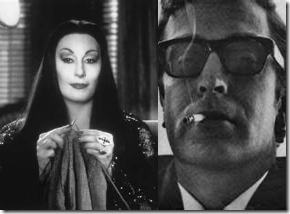 rape but pleaded guilty to unlawful sex with a minor. To avoid sentencing, POLANSKI fled to his home in London, and then moved on to France the following day.[34]
rape but pleaded guilty to unlawful sex with a minor. To avoid sentencing, POLANSKI fled to his home in London, and then moved on to France the following day.[34]
It is interesting to note that the primary prosecuting witness against POLANSKI was Actress Anjelica Huston,[35] the daughter of Hollywood actor and film director, John Huston.[36] Anjelica was the girlfriend of demented Bob Richardson, above, father of the infamous Satanist-Nazi loving fashion iconic photographer of Barack Obama and Kanye West, Terry Richardson. [37] They’re all part of the same secret powerful international Satanic Coven.
Ninth Gate like POLANSKI’s 1968 Rosemary’s Baby [calling forth the Great BEAST Aleister Crowley’s Moon Child (Satan’s Offspring)] is a slick covert Luciferian initiation rite film. The Ninth Gate is designed to subliminally draw in the unsuspecting and guide and initiate them into and through the nine gates of HELL.
So, why is Nicki Minaj reimaging in exorcism an international fugitive, ROMAN POLANSKI, in mass media on the day that Whitney Houston died?
Lucifer’s Servants Play No Game: the Sharon Tate Satanic Murders
In 1969, POLANSKI and his Luciferian Coven were involved in one of the most infamous horrific mass murder satanic sacrifices in American History, the Sharon Tate Murders.
On August 9, 1969, Sharon Tate, Victim 1,was eight and a half months pregnant when she and her unborn child were savagely slaughtered in her home, along with four others, by followers of Charles Manson.Tate was married to ROMAN POLANSKI. Sharon was two weeks from giving birth. She pleaded with the assassins, at least, save the baby. The unborn child died in her womb. The horrific mass murders took place at their home located near Lookout Mountainat 10050 Cielo Drive in Benedict Canyon.
One of their victims, Abigail Folger, Victim 2, must have put up a  courageous struggle and made a frantic attempt to save her life. She was found blooded and dead just outside the house.
courageous struggle and made a frantic attempt to save her life. She was found blooded and dead just outside the house.
Folgersuffered massive and savage face stab wounds from the assassins. They no games.
spacer
Tate and her former lover, the infamous Hairdresser of the Stars, Jay Thomas Sebring, Victim 3, were hung from the rafters of the ceiling, stabbed, tortured, and strangled to death.
Their outer victim, Wojciech Frykowski, Victim 4, was also found outside the house blooded, savagely beaten and stabbed to death. Below, Steven Parent, 18, just happened on the crime scene to visit the Polanski’s dog keeper in a back house. He was also slain, stabbed and shot in the head. He became the infamous 5th victim at 10050 Cielo Drive. As they were leaving, the satanic assassins used a towel dipped in Sharon Tate’s blood to write DEATH TO PIGS on the wall and PIG on the front door.
Preston Guillory, a former deputy sheriff in Los Angeles, reportedly revealed that, “A few weeks prior to the [arrests at the] Spahn Ranch raid, we were told that we weren’t to arrest Manson or any of his followers the reason he was left on the street was because our department thought that he was going to launch an attack on the Black Panthers.”[38]
The Satanic Slaughters didn’t end on Cielo Drive. On August 10, 1969, Leno and Rosemary LaBiancawere heinously slain in their home down the way from Laurel Canyon and Hollywood.
WAR (racial) was carved out of Leno’s body. As the satanic assassins left, with the blood of the LaBiancas, they left a false calling call on the wall of the home, again, “Death to Pigs.”
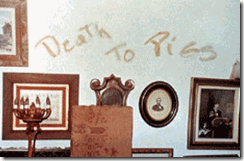 Charles Manson’s handlers and the Aliester Crowley’s ‘Ordo Templi Orientis’ (OTO), the Process Church wanted to start a race war. The Manson Satanic Cult followers were sent in to kill sadistically part of Polanski’s Luciferian Coven, Sharon Tate, Jay Sebring, Abigail Folger, Wojciech Frykowski,and make it seem as though the Black Panthers did it.[39] They were slain and sacrificed in such a horrific manner to shock the world to start HELTER SKELTER, the Apocalyptic Race War and the wholesale annihilation of Black People.[40]
Charles Manson’s handlers and the Aliester Crowley’s ‘Ordo Templi Orientis’ (OTO), the Process Church wanted to start a race war. The Manson Satanic Cult followers were sent in to kill sadistically part of Polanski’s Luciferian Coven, Sharon Tate, Jay Sebring, Abigail Folger, Wojciech Frykowski,and make it seem as though the Black Panthers did it.[39] They were slain and sacrificed in such a horrific manner to shock the world to start HELTER SKELTER, the Apocalyptic Race War and the wholesale annihilation of Black People.[40]
The Many Strange Faces of Tex Watson
Charles “Tex” Watsonis generally believed to have been one of the main butcher in the Satanic Tate and LaBrianca Murders. Texcame to California sometime during the summer of 1967. He was in the same Hollywood-Beverly Hills business as Jay Sebringin hair dressing products. Tex had been the co-owner of Crown Wig Creationson the corner of Santa Monica Boulevard and Rodeo Drive in Beverly Hills. In the fall of 1968, Texjoined the Manson Family after allegedly meeting but most likely setup with Charles Manson at the Beach Boys Dennis Wilson’shouse in Laura Canyon.
POLANSKI’s old Polish friend, Wojciech Frykowski, and Jay Sebringwere involved in the Beverly Hills/Los Angeles drug trade linked to the Canadian Mob through the infamous French Connection. POLANSKI’s inner circle regularly supplied Tex and Manson Family with drugs, which included “Orange Sunshine”LSD. Texwrote in his prison memoir, Will You Die for Me?,that it was the use of the Orange Sunshine LSDthat finally convinced him that Manson’s Helter Skelter, apocalyptic vision was real.
Orange Sunshinewas primarily manufactured and distributed by a group known as “The Brotherhood of Eternal Love” who operated out of a beach resort near Los Angeles. One of the Brotherhood’s major drug manufacturers and dealers was Ronald Hadley Starkof New York. The Brotherhood was controlled by Ronald Stark, whom an Italian High Court concluded had been a CIA agent since 1960. The Brotherhood’s funds were channeled through Castle Bank in the Bahamas, a known CIA “proprietary.” Starkhad been secretlyattached to a CIA project later to be revealed as MK ULTRA.
Additionally, Sharon Tatewas a well known and established “Witch”, who was inducted into witchcraft in London on the set of the POLANSKI-directed film, The Fearless Vampire Killers, by Alexander Saunders,  “King of the Witches.” Saunders had received direct ‘training’ as a child from the BEAST 666, Aleister Crowley. The POLANSKI house had been a well known coven haven that practiced witchcraft and conducted regular satanic rituals and ceremonials that included Tex and the Manson Family.
“King of the Witches.” Saunders had received direct ‘training’ as a child from the BEAST 666, Aleister Crowley. The POLANSKI house had been a well known coven haven that practiced witchcraft and conducted regular satanic rituals and ceremonials that included Tex and the Manson Family.
Manson Family Member, Susan Atkins, above, had also been a well known and infamous “Witch” of Mendocino County that had been part of POLANSKI‘s secret Satanic Coven. Susan “Sexy Sadie” Atkins, who admitted stabbing Sharon Tate, was also an adept of the infamous Satanist Anton Szandor LeVay, Church of Satan. Below, Susan Aktins, nude, in a 1966 satanic ritual with her Luciferian Mentor, Anton LeVay.
LeVay, below left, with the familar demonic hypnotic stare was the technical advisor to POLANSKI’s legendary Rosemary’s Baby which Sharon Tate also played a small part in, and is generally believed to have played the part of the DEVIL in the movie.
After Tex’s extradition from Texas to face murder charges, a self destruct or termination alter personalitytook over Tex’s primary personality to protect his MK ULTRA handlers, the sources of his mind control programming. In October of 1970, Tex was sent to Atascadero State Hospital. He was adjudged insane and unable to stand trial. A report said the then 24-year-old was “turning into a vegetable.” He was being fed by a tube having lost 50 pounds and staring off into space and giggling. A UPI story quotes the report, “He remains mute and nonverbal,” it said. “At times he appears to understand and tears well up in his eyes.”
He subsequently was tried and convicted of murder, but his handlers remain unknown. However, we know that after he arrived in California and before joining the Manson Family in the fall of 1968, Texhad lived at 8584 Wonderland Avenuefor 5-6 months. It was enough time for him to be mind control programmed for a special operational project of MK ULTRA. The secret and classified 8935 Lookout Mountain Blvd facility sits directly opposite to and just down the way to the inamous Wonderland Avenue of Laurel Canyon.
Lucifer’s Servants the Secret Lookout Mountain Laboratory
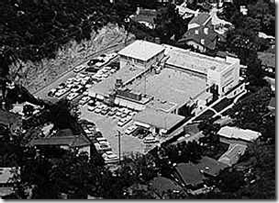 The Polanski Satanic Cult, Manson Family and the Sharon Tate sacrifices were secret projects of the Lookout Mountain Laboratory. For decades, the mountains and canyons, particularly Laurel Canyon, overlooking Hollywood hid a lot of things even outlaws of Wild-Wild West and racialist “White Knights” to a complete $4 million pre WWII Nazi Compound and Fort.[41] Hidden in a valley in Laurel Canyon on Wonderland Park Avenue during the 1960s was a Top-Secret U.S. Military propaganda machine, Lookup Mountain Laboratory.
The Polanski Satanic Cult, Manson Family and the Sharon Tate sacrifices were secret projects of the Lookout Mountain Laboratory. For decades, the mountains and canyons, particularly Laurel Canyon, overlooking Hollywood hid a lot of things even outlaws of Wild-Wild West and racialist “White Knights” to a complete $4 million pre WWII Nazi Compound and Fort.[41] Hidden in a valley in Laurel Canyon on Wonderland Park Avenue during the 1960s was a Top-Secret U.S. Military propaganda machine, Lookup Mountain Laboratory.
In 1941, the United States, the Army Air Corps (1352d Motion Picture Squadron) secured a 21/2 acre hidden from view site in Wonderland Park Valley, now Wonderland Park Avenue in Laurel Canyon and turned it into a top secret electrical fenced movie production house identified as the Lookup Mountain Laboratory.[42]
In 1947, two years after the end of World War II, Lookout Lab operations suddenly covered post-war propaganda for all branches of the U.S. Military, which indicates it had come under the domain of the Pentagon. The Lab was turned into what had been claimed to be the world’s only completely self-contained movie studio. With 100,000 square feet of floor space, the covert studio included sound stages, screening rooms, film processing labs, editing facilities, an animation department, and seventeen climate-controlled film vaults. It also had underground parking, a helicopter pad and a bomb shelter.[43]
Lookup Mountain Laboratory also had something to do with developing secret weapon testing films for the U.S. Department of Defense (DoD) and Atomic Energy Commission (AEC). The existence of this facility wasn’t acknowledged until the early 90s even though it had produced some 19,000 government propaganda films, and had the likes of John Ford, Jimmy Stewart, Howard Hawks, Ronald Reagan, Bing Crosby, Walt Disney and Marilyn Monroe working there with top-secret clearances on national security “undisclosed projects”[44].
Lookout Mountain Lab and CIA MK ULTRA Mind Control
Svali, an alias, an Illuminati defector revealed that there was a secret location in California which made all of the training films for “Trauma-based mind control”.[45] Most likely than not, it was the Lookout Mountain Lab and the referenced training films were undoubtedly part of the CIA MK-ULTRA mind control program which would be extremely significant and be of great implication.
Hollywood civilian studio staff from Warner Brothers, Metro-Goldwyn Mayer and RKO secretly worked alongside its military staff as producers, cameramen and directors.[46] The lab conducted top secret experiments; and shot military training films and documentaries here until the clandestine studio was suddenly decommissioned in 1969 [47] most likely after or just prior to the Manson Family Helter Skelter Project in the canyons.[48]
The Secret Fort Hunt Treaty between Der Generalmajor Reinhard Gehlen, Reichsfuhrer Heinrich Himmler’s SS and U.S. Government created an Unholy Alliances with the Nazis regarding the national security of the nation. Their collaboration was the roots of the creation of the Central Intelligence Agency (CIA).[49]
Following the Fort Hunt Treaty, over tens of thousands ardent Nazi scientist, doctors, technicians, military, intelligence and counter intelligence operatives-specialists were secretly smuggled into the U.S through Project PAPERCLIP then clandestinely nested in federal national security departments; military, and other U.S. agencies and departments; local governments, universities, hospitals, and corporations.
 The National Security Act of July 26, 1947 officially established the CIA. The Nazis, particularly the SS, Set-Baphomet Teutonic Knights of the Black Sun, officially went on the U.S. Government-Taxpayer payrolls, and the operations at Lookout Lab suddenly significantly expanded and increased that very same year.
The National Security Act of July 26, 1947 officially established the CIA. The Nazis, particularly the SS, Set-Baphomet Teutonic Knights of the Black Sun, officially went on the U.S. Government-Taxpayer payrolls, and the operations at Lookout Lab suddenly significantly expanded and increased that very same year.
I suspect that Lookout Lab was the result of yet another secret Nazi and U.S. Government collaboration. It was an extension of Reichsminister of Propaganda and Public Enlightenment, Paul Josef Goebbels’ Nazi Propaganda Machine into America. Reichsminister Goebbels had been largely responsible for creating the Nazi mass media propaganda program to control public and world opinion to among other things; spin the rise of the mythic Fuehrer, expand Nazi Germany’s Wotan (Aryan Supremacy) Paganism and mask and veil its vast military and intelligence global aggression war 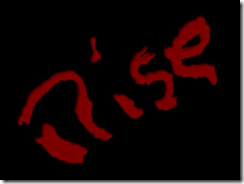 machine for world domination; racial genocide of Jews and People of Color.
machine for world domination; racial genocide of Jews and People of Color.
The 2012 Super Bowl; the Rise of the Dark Forces of Baphomet
Above, “Rise” written in the blood of Leno and Rosemary LaBianca. Don’t disregard the CIA’s Occult Bureau as playing a major part in developing Nicki Minaj’s Grammy Satanic theme production; and Madonna’s Kemetic (Egyptian) themed 2012 Super Bowl half time show that I call the Rise of Set (Baphomet).
By now, there should be question that Nicki Minajis one of Baphomet/Lucifer’s Servants appearing on the set as one of Madonna’s ceremonial Rise of the Devil.
Yet, I wondered about British Rapper M.I.A. (Mathangi Arulpragasam) of Sri Lankan Tamil descent. She has an extremely impressive record of philanthropy in the Mother Country.
However, she has undoubtedly gone through some type of MK ULTRA mind control programming involving the direct whitewashing and suppression of “Melanin Magic” and the Pineal Gland.similar to Alicia Keys on the left.
I am not sure if her expression at the Super Bowl was directed to America’s Racialist Imperialistic War Machine or a message from the God of Evil and Chaos, Set-Seth; and his conspirators, the Guardians of Darkness to the keepers of Justice, Peace, and Divine Order?
M.I.A. is directly linked to Benjamin Bronfman. He is a son of Edgar Bronfman, Jr.,Warner Music Group chairman-CEO and billionaire heir to the Seagram fortune, and Black Actress Sherry “Peaches” Brewer. Yes, the same elite and powerful Bronfman Oligarchy of the ILLUMINATI. Get this. Whitney Houston’s cousin and Luciferian Psychic, Dionne Warwick, introduced the pair.
As just in the days of old, SET-LUCIFER seeks to destroy the balance of order, justice, peace and harmony on earth; and rein Evil and Chaos. Once again, Set-Seth and the Guardians of Dark are searching the earth to assassinate the Sons and Daughters of the Divine Order. I don’t believe anything goes over the public airways of such national/international implications and proportions without clearances and collaboration from the Agency and U.S. Homeland Security.
It is also clearly unqualified documentation and undisputable evidence that the FBI’s COINTELPRO was a major veiled Luciferian program initiated to suppress the rise of the mysterious “BLACK MESSIAH” that would unity the world in universal peace, justice and harmony.
The FBI target March 4, 1968 COINTELPRO memo remains totally arbitrarily. It targets anyone, both heroes and heroines, who could unify and electrify the masses. The infamous COINTELPRO target memo is broad enough to include even targeting, WHITNEY HOUSTON, the “Divine” of the entertainment industry. That is what it says on official government business records. The covert war against the “DIVINE” and “BLACK MESSIAH” was and remains secret U.S. Government policy.
ROMAN POLANSKI was one of the secret “Boys from Lookout Mountain.” He is a Luciferian High Priest. However, the Luciferian fascination with POLANSKI is not his legendary satanic initiation flicks, but his links and the sacrifice of his wife and unborn child to one of America’s most legendary horrific murders of the 20th Century, the Infamous Sharon Tate Slayings. There may have been more gruesome and grisly murders, but these were the paradigm shifting killings of human beings that set the ground and justification for a governmental campaign of an inhuman wave of terror against Black people; and signaled the downfall of the entire Hippie peace-flower generation of the 1960s.
Lucifer’s Servants Play No Game: The Great BEAST 666 Aleister Crowley & Jack the Ripper
ROMAN POLANSKI is not unlike the Luciferian secret fascination in the Great BEAST 666 Aleister Crowley. Crowley is linked to the World’s most legendary horrific murders of the 19th Century, the Whitechapel Slayings of Jack the Ripperin London. Crowley was about 13 years old at the time of the slayings. Both waves of Satanic terror involved 5 (five) brutally slain victims to shock the conscious of the human race.
Occultists believe the number 5 is the number of Death. The number 5 is a characteristic of the man. First, according to the Cabal, it is the number of the perfect Man (got rid from his animal side). According to the Bible, it is the symbol of the Man-God by the five wounds of the Christ on cross (for this reason, it is also considered as the number of the grace). But it is also associated to the man in general (2 + 3) having an unstable character of duality, 2, in spite of his divinity, 3. Edward (Little Eddie) Alexander Crowley, above, attracted the attention of Scotland Yard on various occasions.
 |
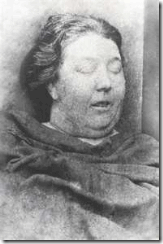 |
| Mary Ann Nichols, August 31, 1888, Jack the Ripper’s1st Victim. | Annie Chapman, September 8, 1888, Jack the Ripper, 2nd Victim |
Crowley claimed he had personal information concerning Jack the Ripper’s identity.[50]
Catherine Eddowes, Whitechapel, September 30, 1888, Jack the Ripper, 3rd Victim
“It was London, 1888. A teenage boy called “Little Eddie,”went to work with red stains on his hands. Little Eddie was a sex worker, a new attraction to the Cleveland Street boy’s brothel. He was the latest teacher’s pet of the aristocratic gay community. But he took it the wrong way. When he arrived for his birthday bash with blood on his hands, some gentlemen wondered: Was it from the bite of a dog or the beak of Poe’s raven? But others knew better. It was London, 1888, and the horrors of Whitechapel weighed heavily on everyone’s mind. A few men suddenly grasped that Jack the Ripper was a teenager.”[51]
Elizabeth Stride, Whitechapel, September 30, 1888, Jack the Ripper, 4th Victim
Prince Eddy of the British Royal Family (Prince Albert Victor, Duke of Clarence and Avondale) was sometimes said to visit the Cleveland Street sauna baths. But there was another Little Eddie in the same murky dwelling. He was one of the telegraph messenger “rent boys” or liveried squires that filled the baths and laundered the towels (according to “Jack the Ripper: The Final Solution” by Stephen Knight, published in 1976). As soon as the stabbing rumors started, he changed his name and slipped through the police dragnets. Edward Alexander Crowley changed his name to “Aleister” after he was about 14 years old.[52]
Mary Jane Kelly became Jack the Ripper’s Infamous 5th Victim of Whitechapel, November 9, 1888
Among the underground, Crowley was known to have secret possession of a bloody talisman given to him by Jack the Ripperthat had attained magical properties. I serious doubt that the Great BEAST had been Jack the Ripper. However, he was there. I believe that he was part of the secret British Royal Family-Satanic Whitechapel cleanup team of the affairs of Prince Albert and the Whitechapel prostitutes; and the British Royal Crown has been indebted to him for that service and secrets he kept. I certainly do believe that the Great BEAST knew who he or they were.
So the secret significance of Madonna’s 2012 Super Bowl Halftime Show again highlights the popular rise of the Egyptian God Set (Baphomet). Nicky Minaj’s ceremonial invocation and resurrection of an alter of ROMAN POLANSKI (Zolanski) at the Grammys celebrate the Fall of the Symbolic Black Diva-Messiah (Queen Ahmose-Nefertari, 17th Dynasty of Ta-Merry [Egypt]) and signal yet another generational united secret campaign among the followers of Set in the spirit of ROMAN POLANSKI (Greater Sacrifice) to promote a more vicious and covert war against the God, humanity, goals and aspirations of People of Color on a global basis.
Before recorded time, the usurper Setmutilated his brother Osiris, a wise lord, king, and bringer of civilization. Osiris’ wife Isis reassembled Osiris’ corpse and embalmed him. Osiris’ son Horus sought revenge upon Set, and the ancient myths describe their conflicts to restore Osiris’ throne, Peace and Justice to the Land of Kemet.
Queens of the 1st Dynasty once bore the title “She Who Sees Horus and Set.”The Pyramid Texts present the pharaoh as a fusion of the two deities. Evidently, pharaohs believed that they balanced and reconciled competing cosmic principle, basically order, peace and justice and chaos. In the 15th Dynasty, Kemet was invaded by the Hyskos “Rulers of Foreign Countries.” The invading Hyskos adopted God Set-Seth [mythology] Chaos to represent their deity.
The God of Evil and Chaos, Set-Seth; and his conspirators, the Guardians of Darkness soured all of the ancient lands for Queen Ahmose-Nefertari and the Black Osirian Messianic lineages of the country that opposed them and that would restore cosmic order to Kemet. A horrible death was their fate if unearthed and exposed. The Hyskos ruled the country for about 233 years from the 15th to 17th Dynasties of Kemet (1783-1550bce).
Queen Ahmose-Nefertari resurfaced anew in Kemet with her brother, Ahmose I, they heroically expelled the ruling Hyskos (Chaos) from Kemet in a series of bloody battles from South to North. Kemet was restored once again. Once more, the two competing cosmic principles of Order-Good and Chaos-Evil was balanced. Queen Ahmose-Nefertari is the grandmother of the 18th Dynasty (The Golden Age of Kemet). She remains one of the most venerated and inspirational women in Kemetic (Egyptian) history, if quiet is kept.
There is no doubt that America is out of Symbolic cosmic balance, and the forces of darkness that rule over the country continue the cosmic battle between God and Evil of the Ancients, unabated. They are slowing coming out of the darkness through mass media as seen in the news, television, movies, music, and the 2012 half time show of the Super Bowl, the Grammys, and murder of Michael Jackson and Whitney Houston. They are becoming even bolder, emblazon and tyrannical to control the global masses with an iron fist of inhuman brutality and indifference. Any God, figure or Messianic musical voices like Michael Jackson and Whitney Houston who promise like Queen Ahmose-Nefertari Symbolic Order, Love, Peace and Justicethrough their music have been mutilated, dismembered and destroyed.
Both Michael Jackson and Whitney Houston were surrounded by Lucifer’s Servants. Michael was MK ULTRA drugged like something out of the pages of Jonestown, left comatose until his life was extinguished. Whitney Houston was mutilated and dismembered with MK ULTRA drugs and highly sophisticated and scientific advanced COINTELPRO electronic harassment devices that slowly consumed her and left her being haunted by Demons.
Yet, the battle is far from over. There will be others Symbolic Sybmols of Justice and Peace like God’s Son Jesus, Queen Nefertaris, Ahmoses, Huey Ps, Dr. Kings, Michael Jacksons, Whitney Houstons, Phyllis Hymans and Donny Hathaways and others to resurface and lead us into cosmic and spiritual battle over Evil and Chaos.
As Dr. Martin Luther King, Jr., said, We shall overcome because the arch of the moral universe is long, but it bends towards justice. We shall overcome because Carlyle is right: “No lie can live forever”
LOOK FOR THE DEVIL IN THE DETAILS. DON’T FALL FOR AN ILLUMINATI WHITEWASH OF INVESTIGATION INTO WHITNEY HOUSTON’S HOMICIDE.
spacer
Oct 4, 2020
“The Neon Demon” Reveals The True Face of the Occult Elite
Published 5 years ago on
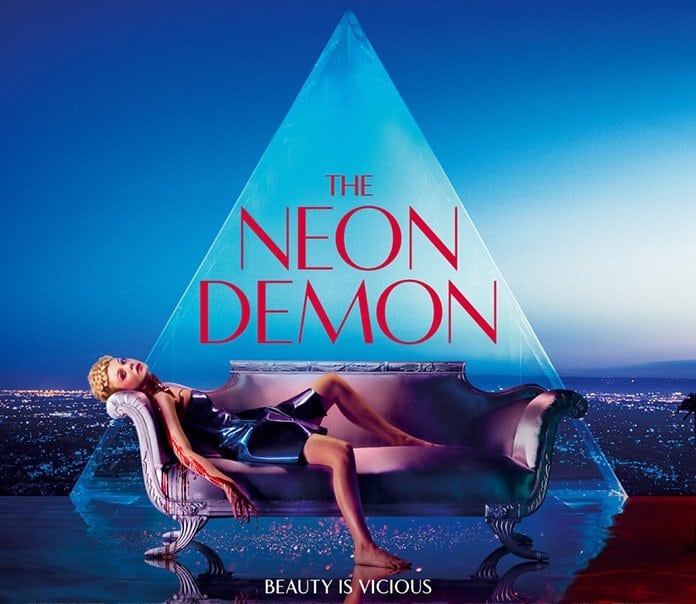
The Neon Demon is a movie about the fashion industry and its obsession with youth and beauty. However, through its story and symbolism, the movie reveals the disturbing mindset of the fashion world and the occult elite behind it.
Warning: This article addresses disturbing subject manners.
Also: Gigantic spoilers ahead!
The Neon Demon is painful to watch. Not only is it filled with long hypnotic sequences that emphasize the shallow self-importance of the fashion world, it deliberately dwells on some of the most upsetting human practices possible including pedophilia, necrophilia, cannibalism and ritual killings. All of these horrors are presented in an aesthetically pleasing matter and placed in a cool, fashionable context in an apparent attempt to normalize them.
Like most of the entertainment analyzed on the Vigilant Citizen, this movie leaves a foul feeling, as if one’s very soul was violated by what was just witnessed. Of course, this kind of result from a “psychological horror movie” is to be expected, but the most disturbing part of this movie isn’t the fiction: It is the dark “real world” truths it appears to celebrate. Indeed, when one knows about the dark side of the entertainment industry – and the occult elite that owns it – the movie becomes a disturbing manifesto, an indulgent celebration from people who revel in darkness. In short, it discloses what the industry is truly about, how it truly functions, and who is truly behind it.
Through the story of an innocent young girl who moves to L.A. with big dreams of being an international supermodel, The Neon Demon reveals the true ugly face of the entertainment industry.
Let’s look at The Neon Demon.
Culture of Death
Subjecting oneself to this kind of movie means being exposed to the twisted mindset of those behind it. And right from the start, The Neon Demon gives us all eyeful of what the fashion world is about: Celebrating a culture of death while preying on youth and innocence.
In the first scene of the movie, Jesse poses in a photoshoot where she appears dead after having her throat slit.
If you’ve read past editions of Symbolic Pics of the Month, you’re already aware of this trend happening in actual fashion shoots. Here is one example of a real photoshoot where the model is basically a “fashionable corpse”.
Preying on Youth
The model in the bloody photoshoot is Jesse, a 16-year-old model who is “new in town”. She meets Ruby, a make-up artist who nonchalantly asks her very specific questions.
As Jesse reveals that she’s a young and vulnerable aspiring model, Ruby gives her intense looks as if saying: “I want to consume you” … literally.
– You’ve just got to L.A., Jesse?
– How did you know?
– You’ve got that look. Don’t worry honey. That whole deer-in-the-headlights thing is exactly what they want.
The “deer-in-the-headlights” thing means youth and innocence. “They” prey and feed on it … literally.
After learning about Jesse’s vulnerable situation, Ruby invites her to a party. This is how newcomers get introduced to the claustrophobic social bubble that is the fashion world.
At the show, Jesse is introduced to two other models, Gigi and Sarah, who also quickly interrogate Jesse.
Ruby mentions that lipstick colors tend to sell more when they’re named after food or sex. She then asks Jesse:
– Are you food or are you sex?
This odd question will become extremely relevant later in the movie. Indeed, there are two ways her vital energy can be “consumed”.
The model’s position is strongly reminiscent of Louise Bourgeois’ Arch of Hysteria.
This particular piece of art and position was shown to be important to the occult elite. Serial killer Jeffrey Dahmer placed one of his headless victims in that specific position.
Dahmer was a cannibal. The Neon Demon also deals with cannibalism. And more. Like abusing minors.
At one point, the motel owner tells Jesse’s friend to check out a girl at his motel.
“Take a peek in room 214 if you get a chance. Runaway. Thirteen years old. Real lolita sh*t. Room 214. Gotta be seen.”
Later in the movie, the motel owner creeps into Jesse’s room to insert a knife down her throat. It is a disturbing reference to violent abuse of young models.
Through these various scenes, we understand that Jesse has entered a messed up world that is looking to consume her.
Entering the Industry
Jesse is soon recruited by a fashion agency that promises her to work with “all of the big designers”, which will lead her to”international success”. When Jesse admits that she’s only 16 years old and that she did not graduate from high school, she is told to tell people that she’s 19.
Nobody cares that she is a minor. In fact, her youth gives her that “something” that the industry desperately preys on. Youth is not only used to sell copies of magazines, it is exploited on a deeper level. Primitive civilizations used to sacrifice young virgins to the gods because they were believed to have the most “magical potency”. This concept is still alive today. People with great wealth, power, and influence believe in these occult concepts that most think to be outdated. The Neon Demon addresses these things in a thinly veiled matter.
When Jesse goes to her first photoshoot with a “big” photographer, things get weird.
At the photoshoot, Jesse has a shiny thing glued to her face. Its shape is reminiscent to the head of Baphomet, complete with horns and the torch of illumination. While this might be a coincidence, the occult context of the movie would say otherwise.
When the photographer sees Jesse with her golden stickers, he appears taken with her. He tells everybody present to leave the room. He then orders Jesse to take off all of her clothes. She’s still 16.
Then, in a strange scene, the photographer passionately rubs Jesse with gold stuff, strangely focusing on her throat in a scene that might simultaneously refer them doing it and her being “the golden girl” of the industry.
Transformation
Jesse’s “It” factor leads her to star at a fashion show. This show begins normally but soon turns into a long, hypnotic, occult ritual that appears to profoundly transform Jesse.
As Jesse walks down the runway, an alternate scene simultaneously takes place in a “higher” dimension. The fashion show is Jesse’s initiation to the industry, where she discovers her new alter persona.
After the show, a new, sexy, non-innocent Jesse is born.
A new Jesse is “unveiled”. She is not a goodie-two-shoes anymore. She wants to be part of the glamorous and superficial world of fashion.
Under the Eye All-Seeing Eye
As Jesse progresses into the fashion world, we are subtly introduced to the dark occult world that rules it. We are also heavily introduced to the symbol that represents it: the ubiquitous All-Seeing Eye (of course). In the movie, the all-seeing eye, aka the eye in the sky, is associated with the moon.
Under a full moon, Jesse talks about how she has no discernible talent except for being pretty … and about how she used to talk to the moon.
“When I was a kid, I would sneak out the roof at night. I thought the moon looked like a big round eye. And I would look up and say: Do you see me?”
Jesse wanted to be noticed by the entertainment industry. She wanted the “big round eye” to see her. Well, it saw her. She got initiated into the industry.
When things get dangerous at her motel, Jesse is invited to stay at Ruby’s house … and things get even weirder. The deer-in-the-headlights is now trapped inside an elite home, and the predators are circling in.
When Jesse pushes her away, Ruby becomes mad. If Jesse cannot be sex, she will be food (you remember the quote above?). But first, Ruby has to do something real quick.
In the next scene, we see Ruby at her second job in a mortuary home where she does makeup on corpses. When she receives the body of a young woman, Ruby becomes very excited.
While this disturbing scene is happening, another scene is juxtaposed to it.
This annoying bit is dragged on for a long time. As Ruby gets excited and moaning sounds intensify, we realize that the movie makers are actually trying hard to make this scene arousing to the viewers. It’s like, they’re really into that stuff and they want us to be into it as well.
After this unnecessary scene, Jesse dresses up for no apparent reason. She becomes the sacrificial lamb.
When Jesse goes outside, Ruby and her two model friends go after her and kill her.
Ruby and her friends do not simply kill Jesse … they consume her. Literally.
Ruby is literally bathing in Jesse’s blood. The two other models are also drenched in blood in the shower.
After this nauseating scene, we see Ruby partaking in a strange ritual under a full moon – the “big round eye”. She is demonstrating servitude to the All-Seeing Eye.
Meanwhile, the two other models who consumed Jesse are featured in a high-profile photoshoot. Apparently, eating Jesse imparted them the “It” factor that makes them desirable by the industry again. However, during the photoshoot, one of the models feels sick.
The model cannot take having Jesse inside of her. She stabs herself in the stomach and throws up Jesse’s … eyeball.
What does she do with the eyeball? Guess.
Then, with a completely vacant look on her face, the model goes back to the fashion shoot. ** Cue pop song by trendy pop singer Sia. **
So, what the hell just happened? What is the moral of the story?
Well, “moral” is not really a word that applies here. “Moral” means “concerned with the principles of right and wrong behavior and the goodness or badness of human character”. There is no “moral” here, just an exposition of what the fashion world is about.
The Neon Demon describes how the industry preys on young girls (preferably very young), trapping them in a world they cannot escape. It depicts how people deep in the industry are involved in sick practices motivated by dark rituals.
Jesse, a simple girl from a small town, was full of the natural beauty and vitality that the soulless Hollywood vampires so desperately crave. After years inside the cesspool that is the fashion industry, all the humanity has been sucked out from them, leaving them yearning for young blood.
Innocent souls not yet tainted by the industry are lured towards the “inner circle” to then be exploited. When they cannot be used anymore, they are disposed of. Those who actually make it in the industry are those who profit from the exploitation – those who “absorb” the life force of others. Those who make it are those who have completely sold their soul and are willing to swallow the occult elite’s eyeball to keep going.
The Neon Demon is about celebrating all of this. Literally.
The premiere of Neon Demon featured the stars eating eyeballs. Behind them is a pyramid with a missing eyeball at the top.
In Conclusion
After watching The Neon Demon, it is not surprising to learn that it failed at the box office. It is an indulgent, self-aggrandizing, promotional piece by the industry and for the industry.
And no, the movie does not aim to “expose” or “reveal” anything. It actually attempts to make everything cool, trendy and fashionable. What makes this movie more disturbing is the fact that there is actual truth behind the fiction. People at the highest levels of these industries are indeed steeped in systematic abuse, exploitation, and all kinds of other sickening practices. They are so protected by the system that they can make movies about this crap and nobody interrupts their fun.
Why are they so into this? Well, once you swallow the occult elite’s eyeball, you’re either infected for life … or you die. ** Cue pop song by trendy singer Sia **.spacer
For more information view the following posts:
The Ancient Mystery Religion – The MAGI(CIANS)

 Illuminati Gang Sign: Uttarabodhi Mudra
Illuminati Gang Sign: Uttarabodhi Mudra




























